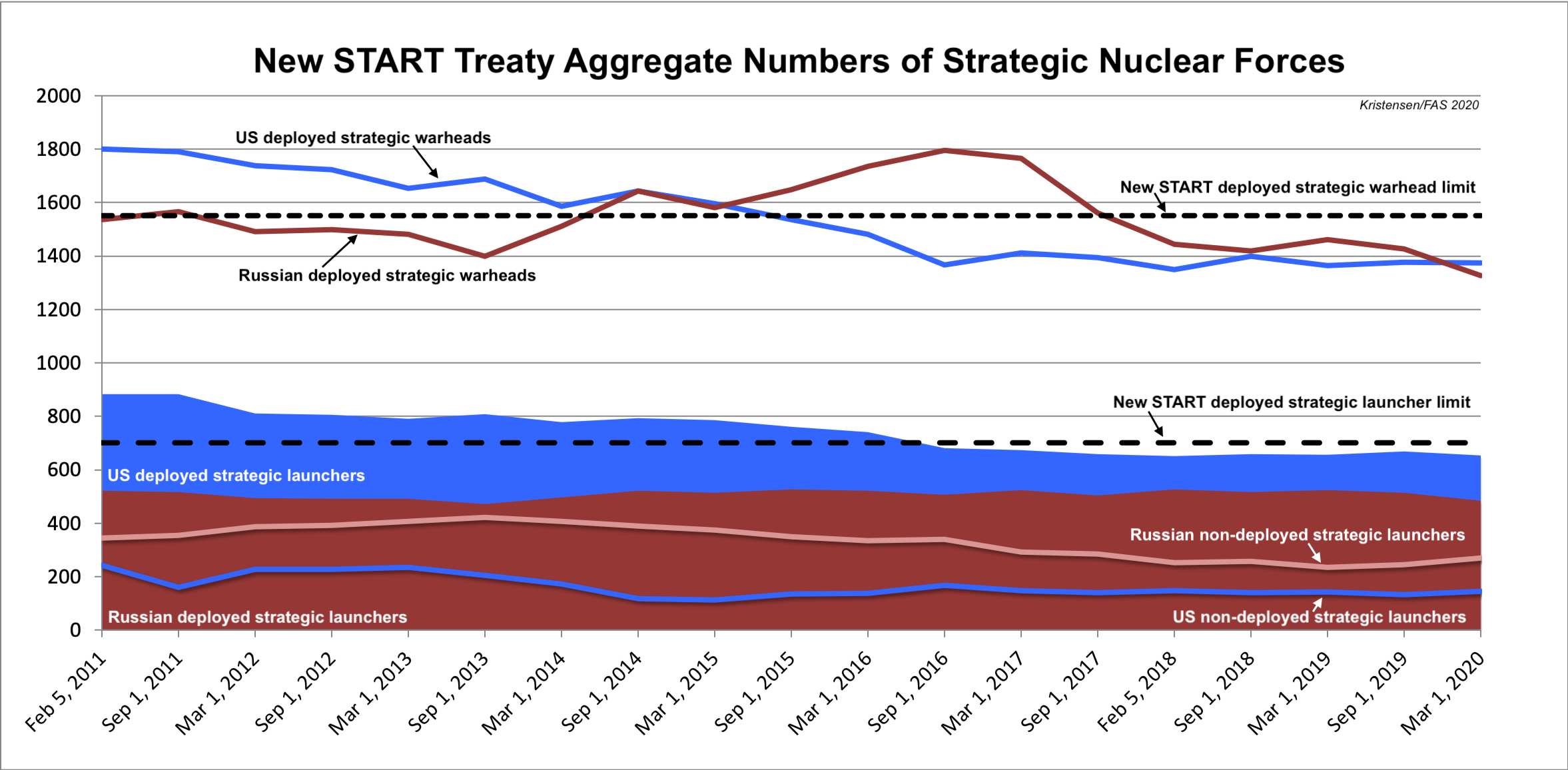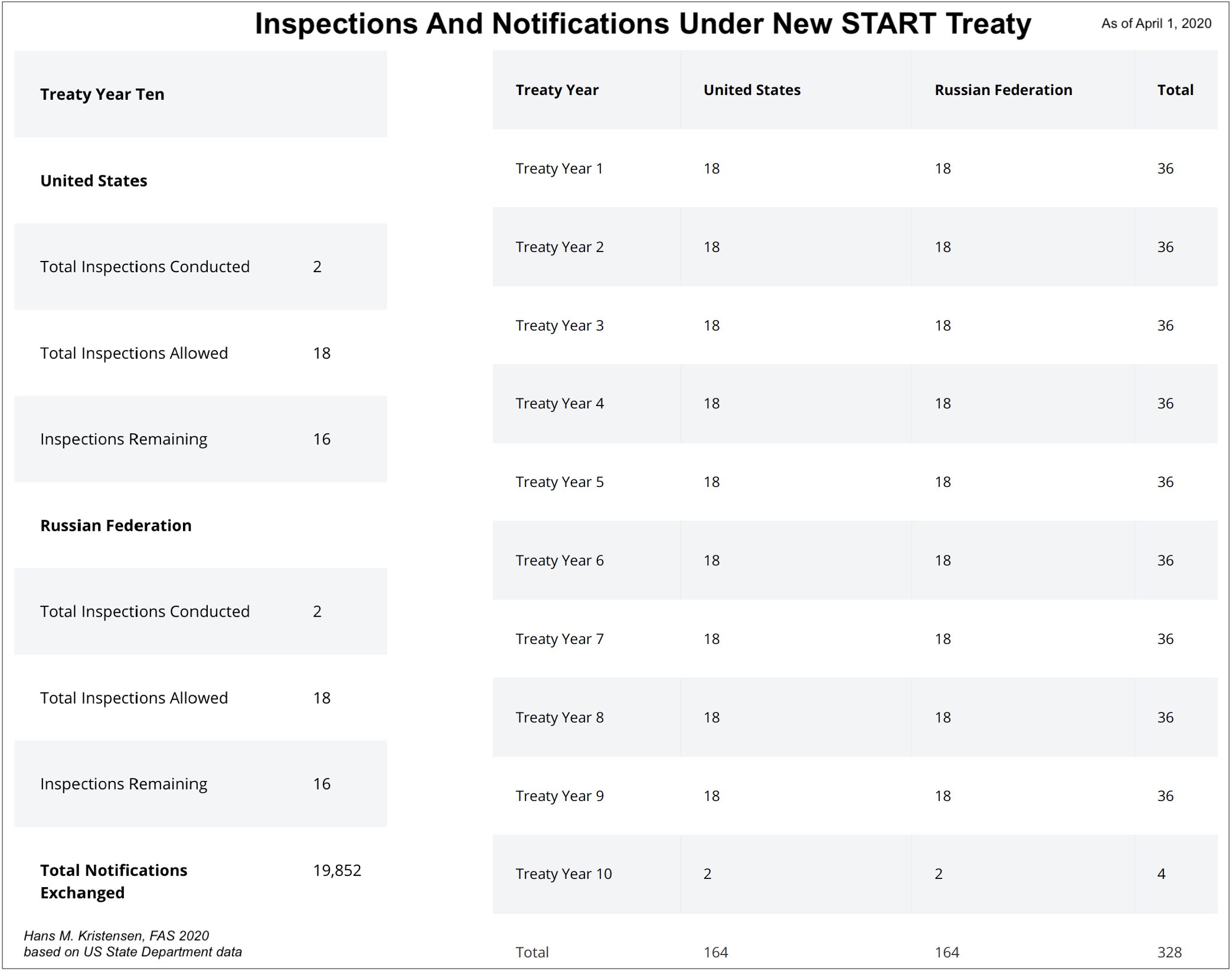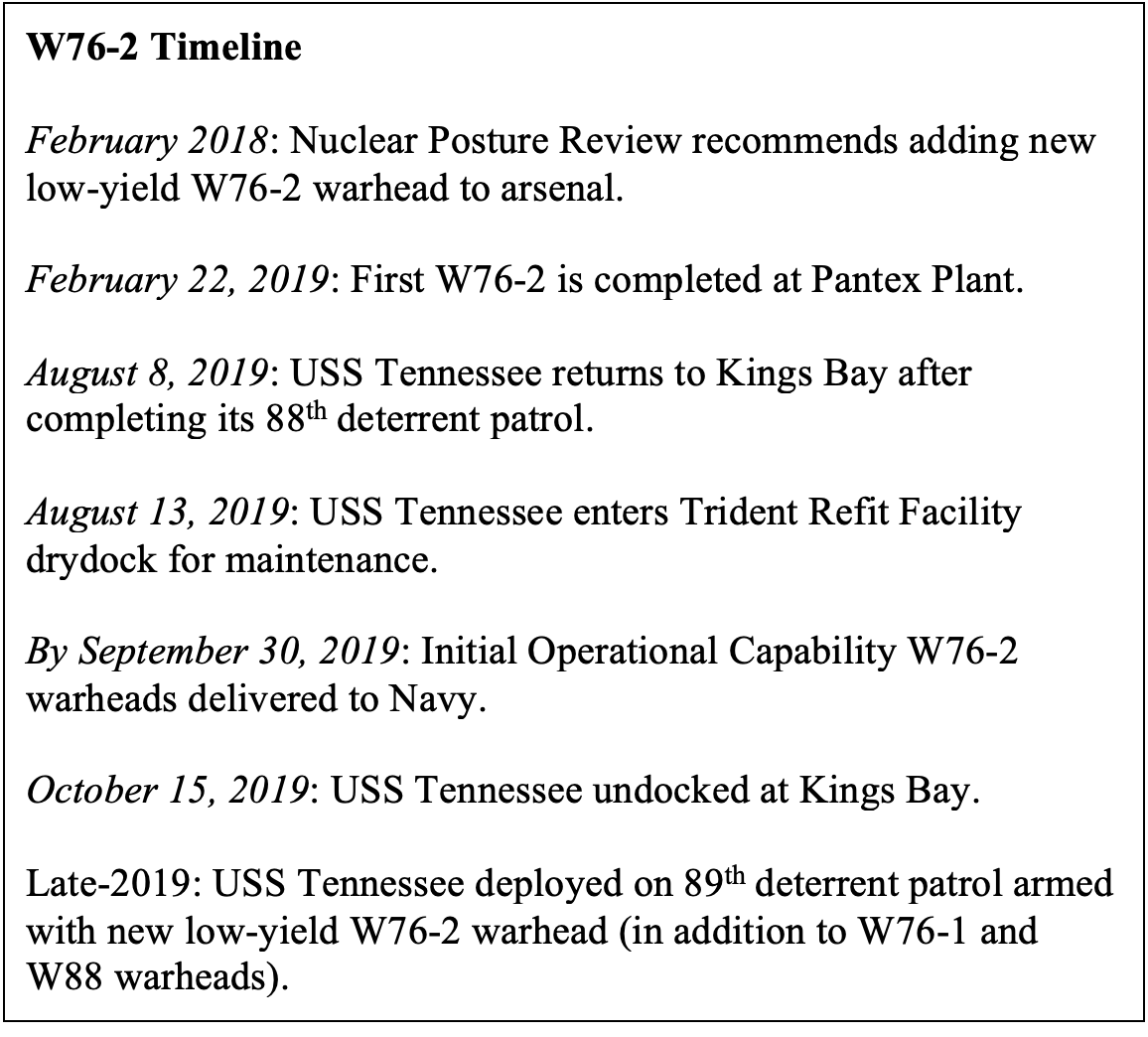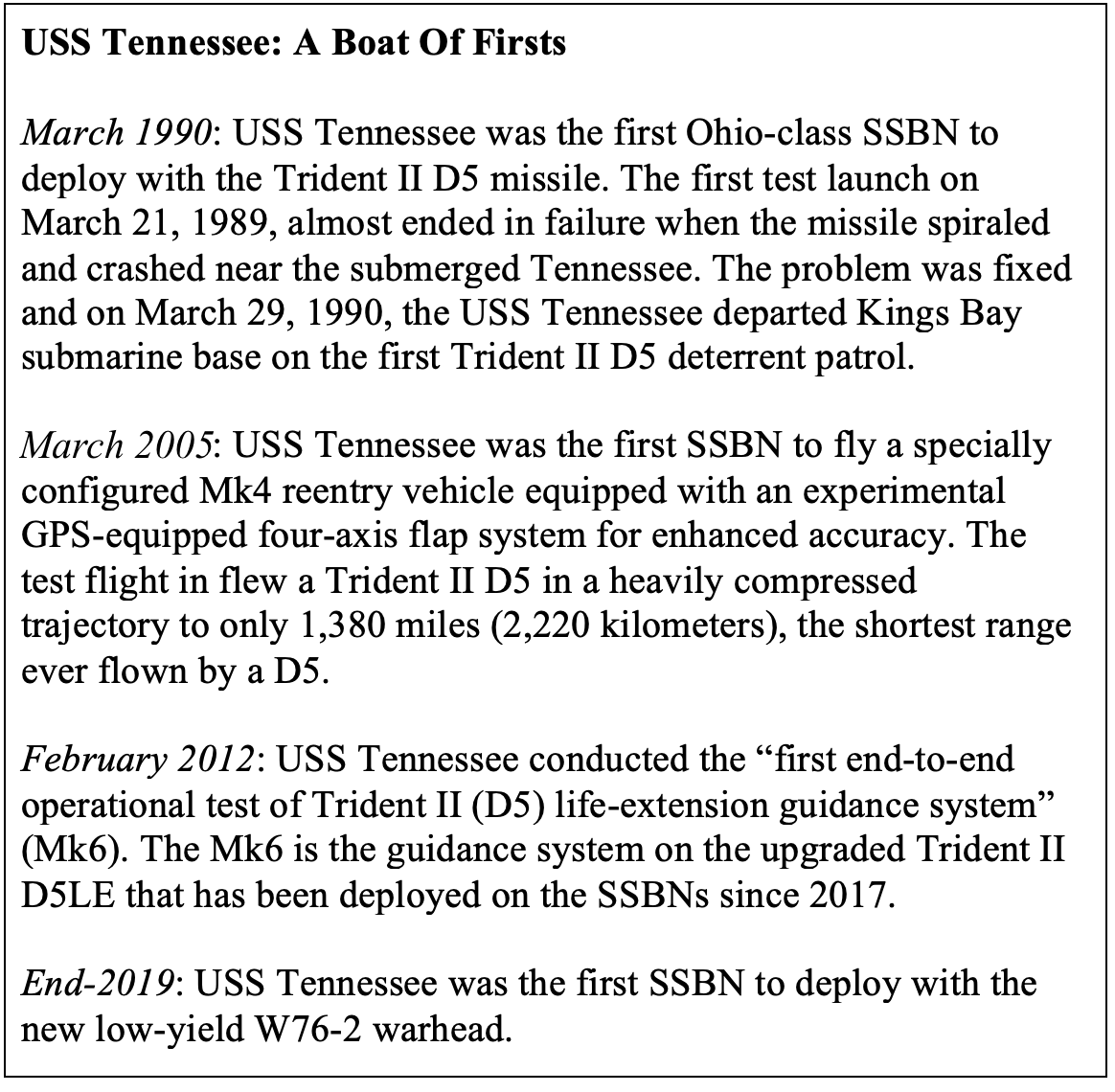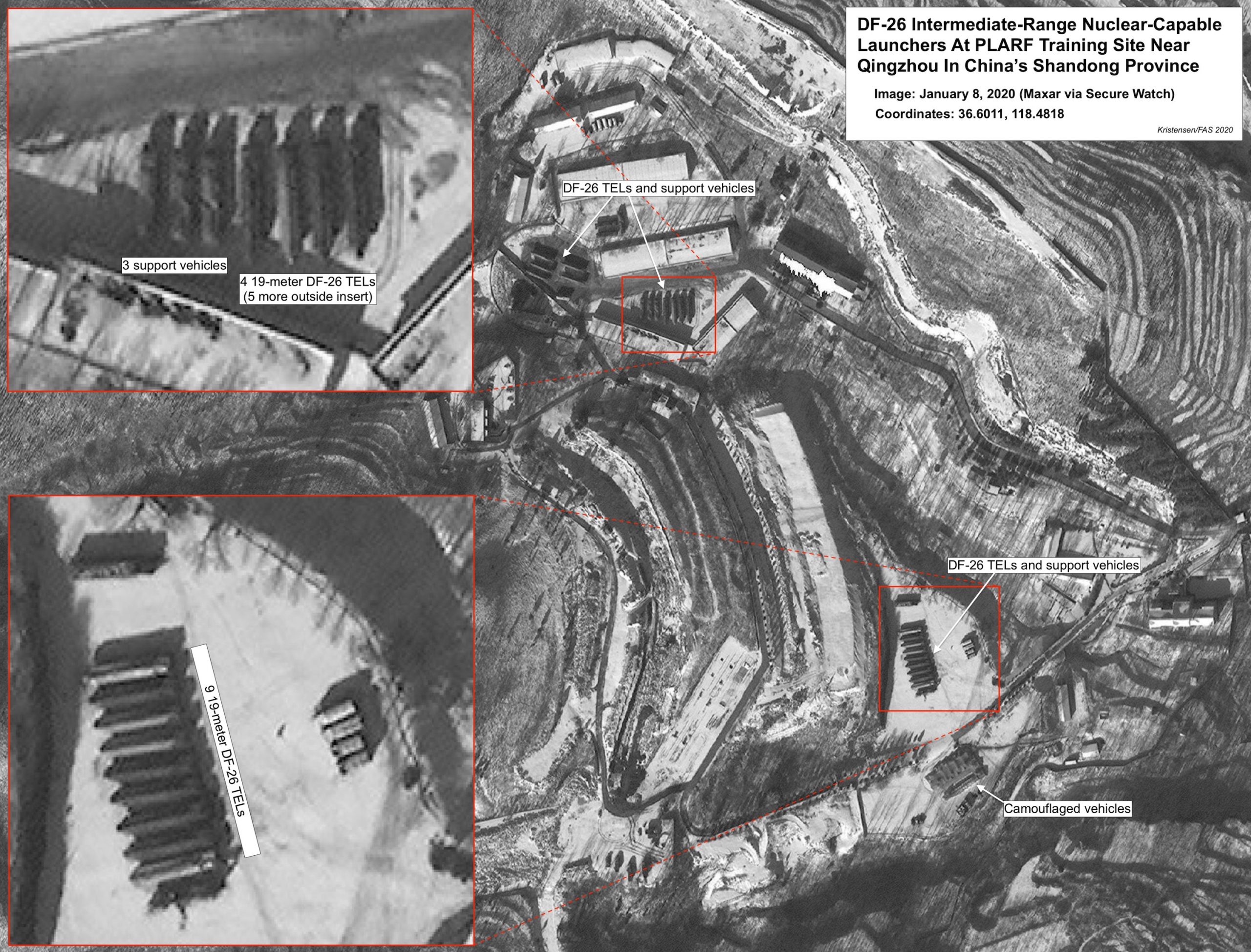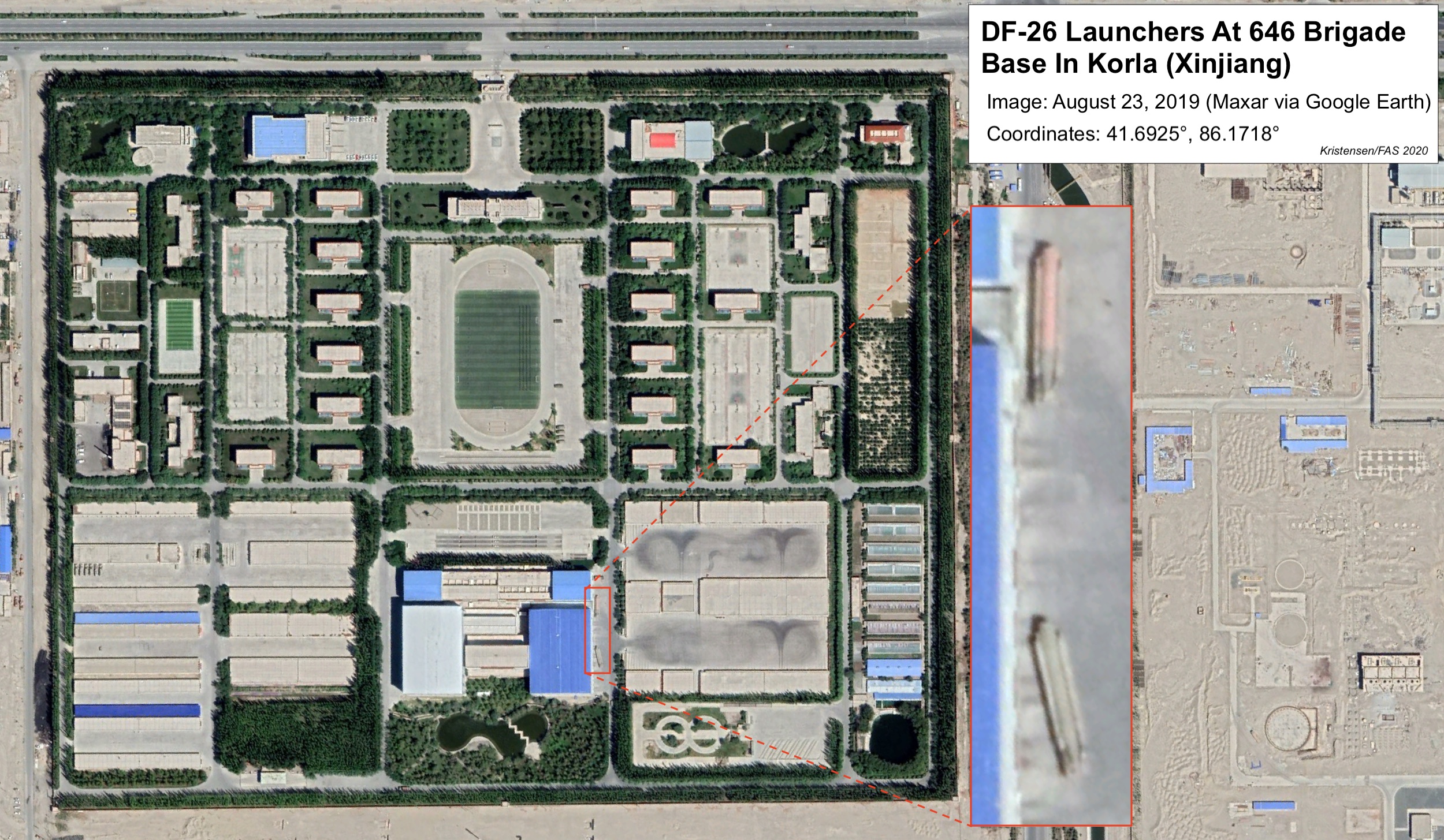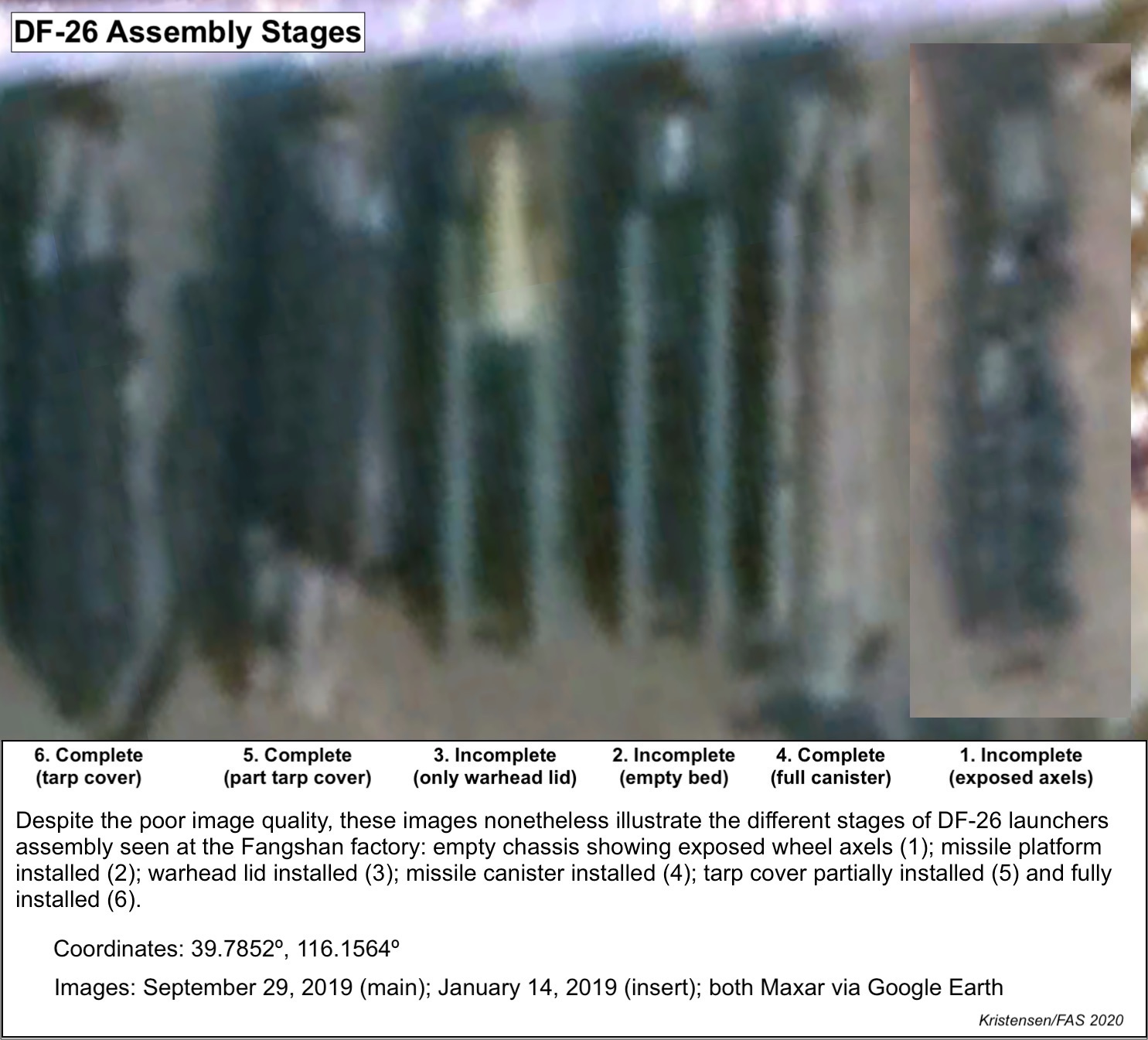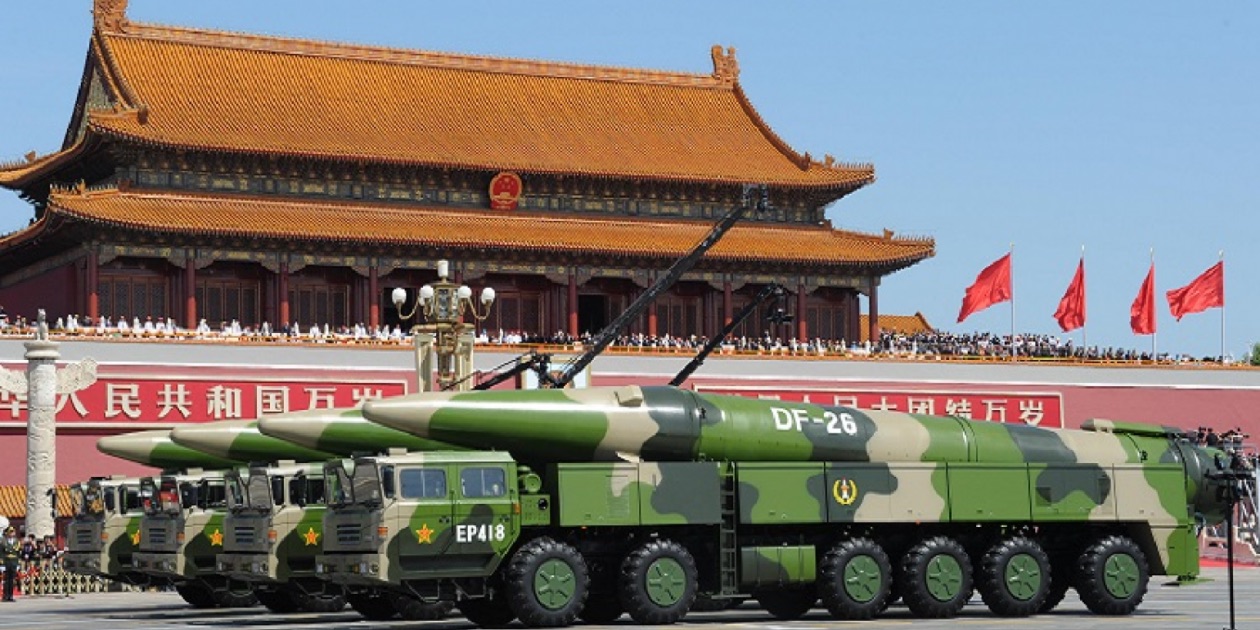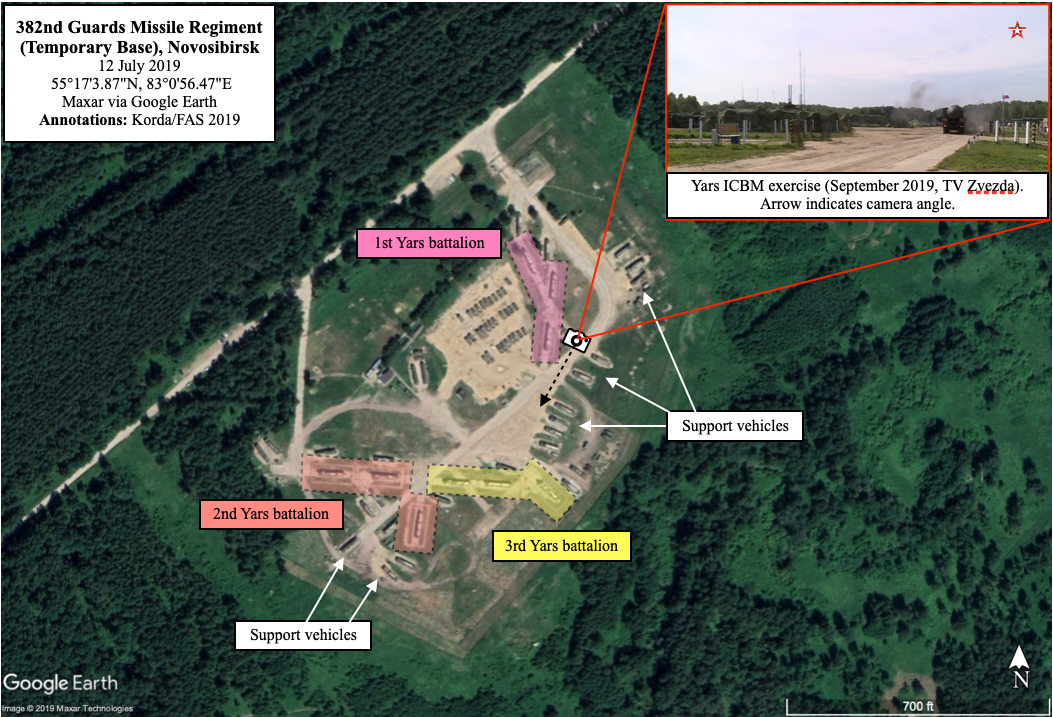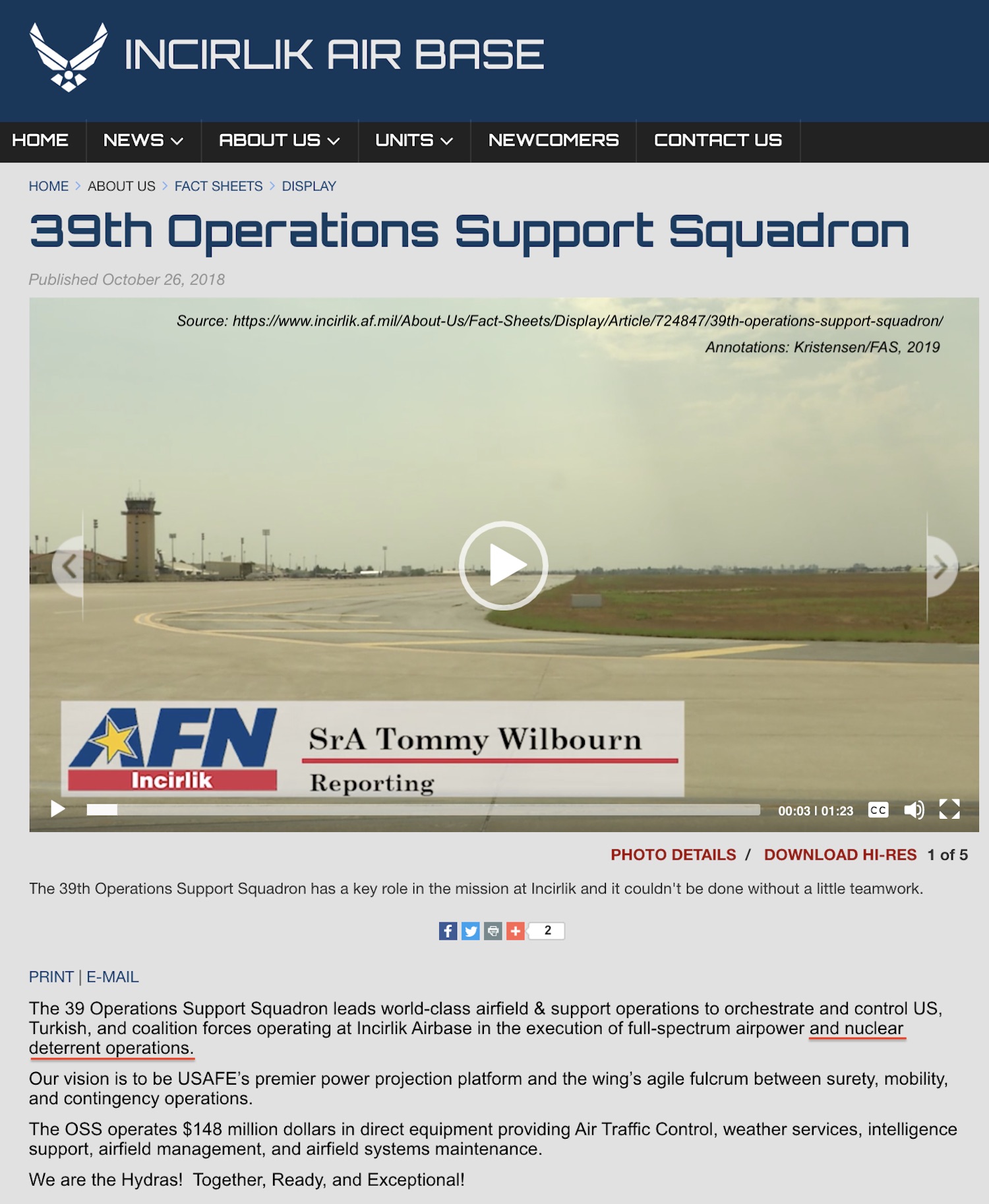Remembering Hiroshima and Nagasaki, 75 Years After
Seventy-five years ago, the United States conducted two nuclear attacks against the cities of Hiroshima and Nagasaki, Japan, devastating their populations and destroying their infrastructure.
In the process of manufacturing and testing the nuclear weapons that would eventually be used on Hiroshima and Nagasaki, civilians within downwind communities, nuclear workers, uranium miners and their families, and military personnel were also exposed to harmful and sometimes deadly levels of ionizing radiation. Following their use in Japan, the production and past testing of nuclear weapons in the United States and internationally continues to harm the health, environment, and cultures of communities around the world.
In the United States, we are commonly told that creating and dropping these nuclear bombs was “necessary” in order to end the Second World War and save additional lives. As several prominent historians have detailed extensively, this narrative is oversimplistic and ahistorical: the bombs were never intended to take the place of an invasion, and it is not even clear that they directly brought about the end of the war in the way that is often portrayed. Primary documents show that the commonly-taught narrative about the two atomic bombings can be easily deconstructed. Additionally, these nuclear bombings followed devastating conventional firebombings of Japanese cities that were specifically designed to target civilians and infrastructure.
Seventy-five years later, we commemorate the nuclear attacks and the unspeakable human suffering they inflicted, which remind us of the uniquely destructive capability of nuclear weapons and the importance of ensuring that they are never used in anger again.
In recognition of this 75th anniversary, the Federation of American Scientists is honored to join a coalition of nuclear weapons organizations and survivors in calling for our leaders to take the actions necessary to ensure nuclear weapons are never used again and to negotiate in good faith the global elimination of these most devastating weapons of mass destruction.
As our coalition statement reads,
Today, we are living in a time of extraordinary nuclear dangers. Vital international agreements to reduce and control nuclear weapons worldwide are being abandoned. Budgets for the development and production of new nuclear weapons are growing. Tensions among nuclear-armed nations are rising to levels not seen since the Cold War.
As the mayors of Hiroshima and Nagasaki warn: “We are badly off course in efforts to honor the plea of the hibakusha and end the nuclear threat.”
As the only country to use nuclear weapons in conflict, the United States has a moral obligation to lead the world in ending this menace and restoring communities impacted by nuclear weapons.
People created these weapons and designed the systems governing their use; people can work to eliminate them.
As we wrote on the 75th anniversary of the Trinity test, we are trending in the wrong direction. Despite reductions since the Cold War, there are still more than 13,000 nuclear weapons in the world, and every nuclear-armed country is currently in the midst of modernizing their nuclear arsenals. Disturbingly, bilateral and multilateral arms control agreements have fallen away or are currently under severe stress. Most immediately concerning is New START, which effectively limits US and Russian strategic warhead and launcher deployments, but expires in February 2021. As we have written, New START extension is a no-brainer: Russia and the United States can extend the New START treaty by up to 5 more years. It is essential both sides act responsibly and do so to preserve this essential agreement.
The Federation of American Scientists is honored to provide the world with the best non-classified estimates of the nuclear weapons arsenals. We are grateful for the financial support from the New Land Foundation, MacArthur Foundation, Ploughshares Fund, and the Prospect Hill Foundation to do this work. To explore this vast data, developed over many decades, start here.
75 Years Ago: The Trinity Nuclear Test
On this day 75 years ago, the world entered the nuclear age. The first ever nuclear detonation – known as the Trinity test – took place in New Mexico on July 16th, 1945. Since then, ten countries built more than 134,000 nuclear weapons. More than 13,400 remain today.
In the decades that followed, nuclear testing contaminated lands, oceans, and people, and triggered a nuclear arms race that continues to this day. The Federation of American Scientists is honored to join our colleagues at the Union of Concerned Scientists and Tularosa Basin Downwinders Consortium in a joint statement with five other U.S. organizations on the humanitarian consequences of nuclear testing, endured by victims in the United States and its Pacific territories, from French nuclear testing in French Polynesia and Algeria, Russian nuclear testing in Kazakhstan, British nuclear testing in Australia, and others.
In addition to these harms, the Trinity test marked the beginning of the global nuclear arms race with its endless cycles of nuclear modernization and competition, which continue to this day. Unlike any other invention, nuclear weapons have the capability to destroy human civilization and much or life on Planet Earth.
The Federation of American Scientists has tracked the rise and fall of global nuclear arsenals for many years. Despite reductions since the Cold War, there are still more than 13,000 nuclear weapons in the world. And we are disappointed to note the emergence of five disturbing trends regarding the current and future state of nuclear weapons:
- Every nuclear-armed country is currently in the midst of modernizing their nuclear arsenals. Some countries are actually increasing their stockpiles, while others are swapping out their older weapons with newer, more effective ones that will endure almost until the end of the 21st century.
- Not only are nuclear arsenals either increasing or improving, but it appears that many states are reinvigorating or even expanding the role of nuclear weapons – specifically tactical nuclear weapons – in their military doctrines. State representatives have often claimed that these deployments are actually intended to prevent conflict; however, regardless of how much stake one puts into that sort of statement, it is a fact that many states are now increasingly posturing themselves for nuclear warfighting. This development will make it more difficult to reduce the role of nuclear weapons and pursue significant reductions – and certainly disarmament – in the future.
- In recent years, we have also seen the decline – and general disinterest – in arms control writ large. Today, bilateral and multilateral arms control agreements have fallen away or are under severe stress, multilateral efforts to engage in good faith arms reductions appear to have completely stagnated, and states often seem more interested in blaming and shaming their prospective arms control partners than actually pursuing measures that would offer a modicum of transparency and predictability in an otherwise unpredictable world.
- Rather than pursue arms control, it seems that states are more content with pursuing arms competition and even arms races. This is a result of renewed military competition and is fueled by the tremendous influence that weapons contractors and lobbyists have on government decisions; indeed, sometimes nuclear decisions seem to be driven as much – if not more – by corporate interests than by national security concerns.
- Nuclear-armed states largely do not appear to consider nuclear disarmament to be an urgent global security, humanitarian, or environmental imperative. Instead, most states seem to consider disarmament as a type of chore mandated by the Non-Proliferation Treaty – and not one that they are seriously interested in completing in the foreseeable future. It is increasingly rare to hear any officials from nuclear weapon states express a coherent rationale for pursuing disarmament other than as a result of the obligation to do so under the Non-Proliferation Treaty. Moreover, they seem increasingly focused on shifting the disarmament responsibility onto the non-nuclear states by arguing they first must create the security conditions that will make nuclear disarmament possible.
Although the Trinity test took place 75 years ago, its destructive legacy continues to this day. And despite these harms, some politicians are even trying to return to an era of live nuclear testing. Resuming nuclear explosive testing would be taking a monumental step backward and would open the floodgates for worldwide resumption of nuclear testing and development of new nuclear weapons. Instead, on this 75th anniversary, we must look forward, try our best to reverse these worrying trends, responsibly reduce the arsenals and the role that nuclear weapons serve, and work towards a world eventually free from nuclear weapons.
The Federation of American Scientists is honored to provide the world with the best non-classified estimates of the nuclear weapons arsenals. We are grateful for the financial support from the New Land Foundation, MacArthur Foundation, Ploughshares Fund, and the Prospect Hill Foundation to do this work. To explore this vast data, developed over many decades, start here: https://fas.org/issues/nuclear-weapons/status-world-nuclear-forces/
The State Department’s Compliance Report Plays the Blame Game, Despite Offering Little Evidence
The State Department’s Bureau of Arms Control, Verification and Compliance yesterday released its annual “Compliance Report,” which provides a detailed overview of US (and other countries’) adherence to various treaty and agreement commitments.
The report’s publication comes at a critical time, as the Trump administration has spent the past few years––and the past three months in particular––dismantling the last vestiges of US commitments to the international arms control regime. The administration has recently declared that it is unlikely to extend New START, has withdrawn from the Open Skies Treaty, has alluded to an intent to resume nuclear testing, and has announced that it will “reinterpret” the Missile Technology Control Regime in order to allow the United States to sell armed drones to previously-forbidden countries.
In addition to its intended purpose––providing the official public US assessment of how other countries adhere to arms control treaties and agreements––the administration clearly sees the Compliance Report as a tool to provide justification for shedding treaties. As such, other countries might question the report’s conclusion that the United States is in full compliance with all of its international obligations, but that other treaty parties are not.
Several sections of the Compliance Report are missing both critical context about how and why certain treaties met their eventual ends, as well as actual evidence for some of its claims about the actions of its arms control partners. To that end, we have tried to fill in some of the blanks below.
The Intermediate-Range Nuclear Forces (INF) Treaty
The report assesses that throughout 2019, the United States was in full compliance with the INF Treaty––the landmark Cold War-era treaty that eliminated and banned all US and Russian ground-launched missiles with ranges between 500 and 5,500 kilometers.
Although this assertion appears to be technically correct and provides an extensive overview of Russian activities, it is missing some critical context. Both the United States and Russia suspended their respective obligations under the treaty in February 2019, and the treaty officially died in August 2019. Although it appeared that Russia had been violating the treaty for many years, we have argued that the Trump administration’s decision to finally kill the treaty was the wrong move, for several reasons.
Firstly, withdrawal established a false moral equivalency between the United States, who probably was not violating the treaty, and Russia, who probably was. It also put the United States in conflict with its own key policy documents like the Nuclear Posture Review and public statements made last year, which emphasized staying in the treaty while trying to bring Russia back into compliance through diplomatic, economic, and military measures. NATO preferred this approach until the Trump administration changed its mind and decided to withdraw, at which point NATO followed suit to avoid being seen to be in conflict with Washington.
The 2020 Compliance Report states that withdrawal from the INF Treaty was intended as a “remedy” for Russia’s material breach. But if the ultimate goal was to coax or coerce Russia back into compliance, then killing the treaty did the opposite. Instead, it legally freed Russia to deploy even more INF missiles on land, something the report explicitly warns that Russia might do by converting the SS-N-30a/Sagaris (Kalibr) sea-launched cruise missile into a land-based system. It also allowed the United States to explore developing INF-range missiles of its own. Only 16 days after the treaty’s collapse, the United States test launched a crudely-fashioned missile that would have certainly violated the INF treaty––if it had still existed.
New START
The 2020 Compliance Report notes that both Russia and the United States are in full compliance with the New START treaty, which caps the number of strategic nuclear warheads and delivery vehicles that each country is allowed to deploy. This is not newsworthy in itself; mutual compliance was confirmed by State and Defense Department officials during Senate testimony in 2018, after the February treaty deadline had passed.
It is bizarre that the Trump administration is using alleged Russian non-compliance with other treaties in order to undermine the one treaty with which Russia is actually complying. Moreover, unlike any other treaty mentioned in the Compliance Report, the strategic forces limited by the New START treaty are the only weapons of mass destruction that can threaten the very existence of the United States.
New START expires in less than a year, and while Russia has agreed to extend it unconditionally, the Trump administration has been dragging its feet. This should be a no-brainer: the treaty is a good deal for both parties, it offers a critical source of predictability and transparency into Russia’s nuclear forces, and extension is widely supported across the country, even among Trump voters; in fact, it’s one of the very few bipartisan issues still remaining in Congress. Senior military leaders, such as the Vice Chairman of the Joint Chiefs of Staff and the commander of Air Force Global Strike Command, have declared their full support for the treaty, largely because it offers a critical source of transparency and stability in the US-Russia nuclear relationship.
Specifically, during the 2018 Senate hearing, then-Under Secretary of State for Arms Control and International Security Affairs noted “The United States benefits from the Treaty’s 18 annual on-site inspections, notifications, and biannual data exchanges, which give us insight into the number of Russia’s strategic offensive arms subject to the Treaty and where they are at any given time.” She further noted, “Should the Treaty expire, U.S. inspectors would lose their current access to Russian strategic nuclear warheads and delivery systems, bases, and infrastructure, as well as the Treaty’s biannual exchange of data and associated updates on the location and status of Russia’s strategic offensive arms subject to the Treaty.” However, this fact hasn’t stopped Trump’s new arms control envoy Marshall Billingslea––an ardent opponent of arms control who opposed US ratification of the 1993 Chemical Weapons Convention and the 1996 Comprehensive Test Ban Treaty, and supported US withdrawal in 2002 from the 1972 Anti-Ballistic Missile Treaty––from inexplicably arguing the opposite point. In an interview with The Washington Times last month, he claimed that “The Obama administration negotiated a very weak verification regime […] which the Russians have been exploiting.” The basis for this claim has not been substantiated by other senior administration or military officials, and is not presented in the Compliance Report itself.
In his recent interview, Billingslea noted that a new or extended New START-style deal would necessarily have to include China. This makes no sense. The entire Chinese arsenal is thought to include about 320 warheads––a fraction of the 4,000-4,500 in the US and Russian arsenals––which is why China’s position has consistently been the same: it will not take part in trilateral arms control negotiations while this strategic imbalance remains.
Therefore, as we have previously argued in Forbes, killing New START because it doesn’t include China would do nothing to address the United States’ security concerns about Chinese nuclear forces. Instead, if limits on US and Russian strategic nuclear forces fell away and caused both countries to increase their nuclear forces, China might decide that it would need to increase its stockpile even further in order to adjust to the greater nuclear threat. This would further exacerbate a post-New START nuclear crisis.
Extension does not require Congressional approval; it simply requires a presidential stroke of a pen. Given that both countries benefit from the treaty, that both countries are in compliance, and that the United States’ NATO allies strongly favor an extension, this is a ripe piece of low-hanging fruit.
The Joint Comprehensive Plan of Action
The JCPOA (commonly known as the Iran Nuclear Deal), is not mentioned at all in the Compliance Report. This is not necessarily surprising, as the Trump administration officially withdrew from––and then violated––the deal in 2018. However, in recent weeks, Secretary of State Mike Pompeo has argued that the United States remains a party to the deal, and therefore could demand a reimposition of sanctions on Iran if an arms embargo is not extended past October. As Senator Elizabeth Warren correctly tweeted in response, “This makes no sense.” “To extend this arms embargo,” she noted, “the Trump admin is suddenly arguing that the US is a party to the same Iran Deal it abandoned.”
Pompeo’s unconvincing argument is undermined by his own former State Department top arms control official, who noted in her 2018 Senate testimony that the United States completed its “withdrawal from the arrangement on May 8.” Additionally, if the Secretary of State truly believed that the United States was still party to the treaty, why would it be excluded from his own department’s comprehensive annual assessment of US treaty obligations?
The absence of JCPOA is even more curious because Iran’s nuclear activities are covered extensively over seven full pages in the Compliance Report.
Nuclear Testing
The Compliance Report does not assess any country’s compliance with the Comprehensive Test Ban Treaty (CTBT) because the United States has not ratified it. The report repeats the Trump administration’s statement that it has no intentions to ratify the treaty, but nonetheless assesses that Russia and China may have conducted nuclear weapons tests that fail to meet the United States’ “zero-yield” standard. This assertion echoes the claims initially made by DIA Director Ashley during his remarks at the Hudson Institute in May 2019.
On Russia, the report states that the “United States assesses that Russia has conducted nuclear weapons-related experiments that have created nuclear yield.” But it adds in the next sentence that the “United States does not know how many, if any [emphasis added], supercritical or self-sustaining nuclear experiments Russia conducted in 2019.” A test that released nuclear energy from a canister would require Russian notification under the Threshold Test Ban Treaty (TTPT), which Russia has not provided. But the Compliance Report does not present any evidence but says additional information is included in a classified annex.
On China, the report is even more vague and circumstantial. It doesn’t explicitly accuse China of having conducted low-yield nuclear tests nor present evidence to that effect. Instead, the Compliance Report says a number of other activities “raise concern” about China’s adherence to the zero-yield standard of the United States and that “the United States cannot rule out the possibility that China could have conducted activities at its test site that are inconsistent with its moratorium commitment…” Details are hidden in a classified annex.
Open source analysists have not detected “any alarming activity” in this regard. Absent public evidence, both China and Russia have rejected the claims, with the Russian Deputy Foreign Minister “[urging] the United States to abandon the growing practice of misinforming the global community about what is happening,” and the Chinese Foreign Ministry spokesperson “[refusing] to dignify the groundless US allegation with a refutation.”
Claims about Chinese and Russian low-yield testing are not new, but are occasionally used by anti-arms control hawks working to hype the Russian or Chinese threat, in addition to pushing for the United States to resume nuclear weapons testing. It is unfortunate that this year’s Compliance Report echoed these claims without offering any public proof to back them up, and that would-be arms control killers are subsequently using them as “evidence” of cheating.
Presidential Nuclear Initiatives
A new addition to this year’s Compliance Report is a large section (three and a half pages) on the 1991-1992 Presidential Nuclear Initiatives (PNIs). This is an oddball because the PNIs were unilateral declaration, not treaties, without any verification. Apparently, including the PNIs is part of the administration effort to make the case that Russia is cheating and therefore can’t be trusted with other treaties such as the New START treaty.
Russia is cheating on one part of the PNIs, the report says, because Russia hasn’t eliminated all nuclear warheads for Ground Forces as it promised in 1991. The report explicitly identifies the SS-21 and SS-26 short-range ballistic missiles (the SS-26 is replacing the SS-21) as dual-capable. The report does not explicitly say Russian ground-forces have retained nuclear artillery, a frequent rumor on the Internet. Curiously, the SSC-8 GLCM is not mentioned in the PNI section, even though it is a ground-launched dual-capable weapon (it is addressed in the INF section of the report).
The big picture, of course, is that Russia has fulfilled most of the PNI promises and significantly reduced its inventory of non-strategic nuclear weapons since the 1990s. The Compliance Report only mentions in passing that “Russia continues to abide by some PNI pledges, such as warhead consolidation and likely the declared reduction in stockpiles…” Although Russia retains more non-strategic nuclear weapons than the United States (up to 2,000 according to the Nuclear Posture Review), that has been the case for the past three decades. Statements by US government officials indicate that Russia reduced its inventory of non-strategic nuclear weapons between 2009 and 2019 by more than one-third.
One thing completely missing from the Compliance Report’s assessment of the PNI issue is that US planned production of a new nuclear sea-launched cruise missile––as recommended by the Nuclear Posture Review––would be in violation of the United States’ own PNI pledge.
The Role of the Compliance Report
Violations of treaties and agreements must be addressed and resolved, which requires a persistent and professional level of engagement with other countries. Because the Trump administration is focused on abandoning treaties and reinvigorating “Great Power Competition” with Russia and China, however, the Compliance Report may increasingly be seen as a means to provide a justification for that agenda.
Even if Russia is cheating on some agreements, that doesn’t mean they will cheat on all of them, or that it is no longer worth it to retain the ones that are working. Russia has a clear interest in limiting US nuclear forces just as the United States and its allies have an interest in limiting Russian forces.
And even though China is slowly increasing its nuclear arsenal, that doesn’t mean that it is necessarily sprinting to parity. Even if the DIA’s projection that China will “at least double the size of its nuclear stockpile” over the next decade were to happen, that would still not bring the inventory anywhere near the size of the US or Russian stockpiles, which are currently estimated at 4,310 and 3,800 warheads, respectively.
There is also an expectation that if China increases its arsenal it will inevitably result in the abandonment of its no-first-use policy. In February, the head of US STRATCOM offered Senate testimony that he “could drive a truck through that no-first-use policy.” But others, such as Gregory Kulacki, have noted that China’s nuclear strategy is more restrained than what the public debate often assumes.
In sum, the annual Compliance Report should function as a way for the United States and its arms control partners to get on the same page about the status of their respective obligations and anticipate where future compliance issues might arise––not as a way to offer justifications for its own misdeeds. Otherwise, its publication may soon contribute to a breakdown in arms control altogether, rather than function as a mechanism to save it.
A Decade After Signing, New START Treaty Is Working
On this day, ten years ago, U.S. President Barack Obama and Russian President Dmitri A. Medvedev signed the New START treaty during a ceremony in Prague. The treaty capped the number of strategic missiles and heavy bombers the two countries could possess to 800, with no more than 700 launchers and 1,550 warheads deployed. The treaty entered into force in February 2011 and into effect in February 2018.
Twice a year, the two countries have exchanged detailed data on their strategic forces. Of that data, the public gets to see three sets of numbers: the so-called aggregate data of deployed launchers, warheads attributed to those launchers, and total launchers. Nine years of published data looks like this:
The latest set of this data was released by the U.S. State Department last week and shows the situation as of March 1, 2020. As of that date, the two countries possessed a combined total of 1,554 strategic missiles and heavy bombers, of which
1,140 launchers were deployed with 2,699 warheads (note: the warhead number is actually about 100 too high because each deployed bomber is counted as one weapon even though bombers don’t carry weapons under normal circumstances).
Compared with September 2019, the data shows the two countries combined cut 3 strategic launchers, reduced deployed strategic launchers by 41, and reduced the number of deployed strategic warheads by 103. Of these numbers, only the “3” is real; the other changes reflect natural fluctuations as launchers move in and out of maintenance or are being upgraded.
Compared with February 2011, the data shows the two countries combined have cut 435 strategic launchers, reduced deployed strategic launchers by 263, and reduced the number of deployed strategic warheads by 638. While important, it’s important to remind that this warhead reduction is but a fraction (less than 8 percent) of the estimated 8,110 warheads that remain in the two countries combined nuclear weapons stockpiles (less than 6 percent if counting their total combined inventories of 12,170 stockpiled and retired (but yet to be dismantled) warheads).
The United States
The data shows the United States currently possessing 800 strategic launchers, of which 655 are deployed with 1,373 warheads attributed to them. This is a reduction of 13 deployed strategic launchers and 3 deployed strategic warheads over the past 6 months. These are not actual reductions but reflect normal fluctuations caused by launchers moving in and out of maintenance. The United States has not reduced its total inventory of strategic launchers since 2017.
Compared with February 2011, the United States has reduced its inventory of strategic launchers by 324, deployed launchers by 227, and deployed strategic warheads by 427. While important, the warhead reduction represents only a small fraction (about 11 percent) of the 3,800 warheads that remain in the U.S. stockpile (a little over 7 percent if counting total inventory of 5,800 stockpiled and retired (but yet to be dismantled) warheads).
The Russian Federation
The New START data shows Russia with an inventory of 764 strategic launchers, of which 485 are deployed with 1,326 warheads attributed to them. Compared with six months ago, this is a reduction of 28 deployed launchers and 100 deployed strategic warheads and reflects launcher maintenance and upgrade work to new systems.
Compared with February 2011, Russia has cut its inventory of strategic launchers by 111, deployed launchers by 36, and deployed strategic warheads by 211. This modest reduction represents less than 5 percent of the estimated 4,310 warheads that remain in Russia’s nuclear weapons stockpile (less than 4 percent if counting the total inventory of 6,370 stockpiled and retired (but yet to be dismantled) Russian warheads).
The Russian reductions accomplished under New START are smaller than the U.S. reductions because Russia had fewer strategic forces than the United States when the treaty entered into force in 2011.
Build-up, What Build-up?
With frequent claims by U.S. officials and nuclear weapons advocates that Russia is increasing its nuclear arsenal, it is interesting that despite a significant modernization program, the New START data shows this increase is not happening in the size of Russia’s strategic nuclear forces.
On the contrary, the New START data shows that Russia now has 170 deployed strategic launchers fewer than the United States, a number that exceeds the size of an entire US Air Force ICBM wing. The Russian launcher deficit has been growing by more than one-third since the lowest point of 125 in February 2018.
The Russian military is trying to compensate for this launcher disparity by increasing the number of warheads that can be carried on newer missiles replacing older types. Most of these warheads are not deployed on the missiles under normal circumstance but stored and could potentially be uploaded onto launchers in a crisis. The United States also has such an upload capability for its larger inventory of launchers and therefore is not at a strategic disadvantage.
Two of Russia’s new strategic nuclear weapons (Avangard and Sarmat) are covered by New START. Other types are in relatively small numbers and do not appear capable of upsetting the strategic balance. The treaty includes provisions for including new weapon types.
Inspections and Notifications
In addition to the New START data, the U.S. State Department also recently updated its overview of the status of the on-site inspections and notification exchanges that are part of the treaty’s verification regime.
Since February 2011, U.S. and Russian inspectors have carried out 328 on-site inspections of each other’s strategic nuclear forces and exchanged 19,852 notifications of launcher movements and activities. Four inspections happened this year before activities were temporarily halted due to the Coronavirus.
This inspection and notification regime and record are crucial parts of the treaty and increasingly important for U.S.-Russian strategic relations as other treaties and agreements have been scuttled.
But time is now also running out for New START with only a little over 10 months remaining before the treaty expires on February 5, 2021.
Russia and the United States can extend the New START treaty by up to 5 more years. It is essential both sides act responsibly and do so to preserve this essential agreement.
See also: Count-Down Begins For No-Brainer: Extend New START Treaty
This publication was made possible by generous contributions from the John D. and Catherine T. MacArthur Foundation, the New Land Foundation, the Ploughshares Fund, and the Prospect Hill Foundation. The statements made and views expressed are solely the responsibility of the authors.
Count-Down Begins For No-Brainer: Extend New START Treaty
One year from today, on February 5, 2021, the New START treaty will expire, unless the United States and Russia act to extend the last nuclear arms control agreement for an additional five years.
No matter your political orientation, treaty extension is a no-brainer – for at least six primary reasons.
1. New START keeps nuclear arsenals in check. If the treaty expires, there will be no constraints on US or Russian strategic arsenals for the first time since 1972. It would remove caps on how many strategic nuclear missiles and bombers the two sides can own and how many warheads that are carried on them. This means that Russia could quickly upload about a thousand new warheads onto its deployed missile arsenal–without adding a single new missile. The United States could upload even more because it has more missiles and bombers than Russia (see table below). And both sides could begin to increase their arsenals, risking a new nuclear arms race.
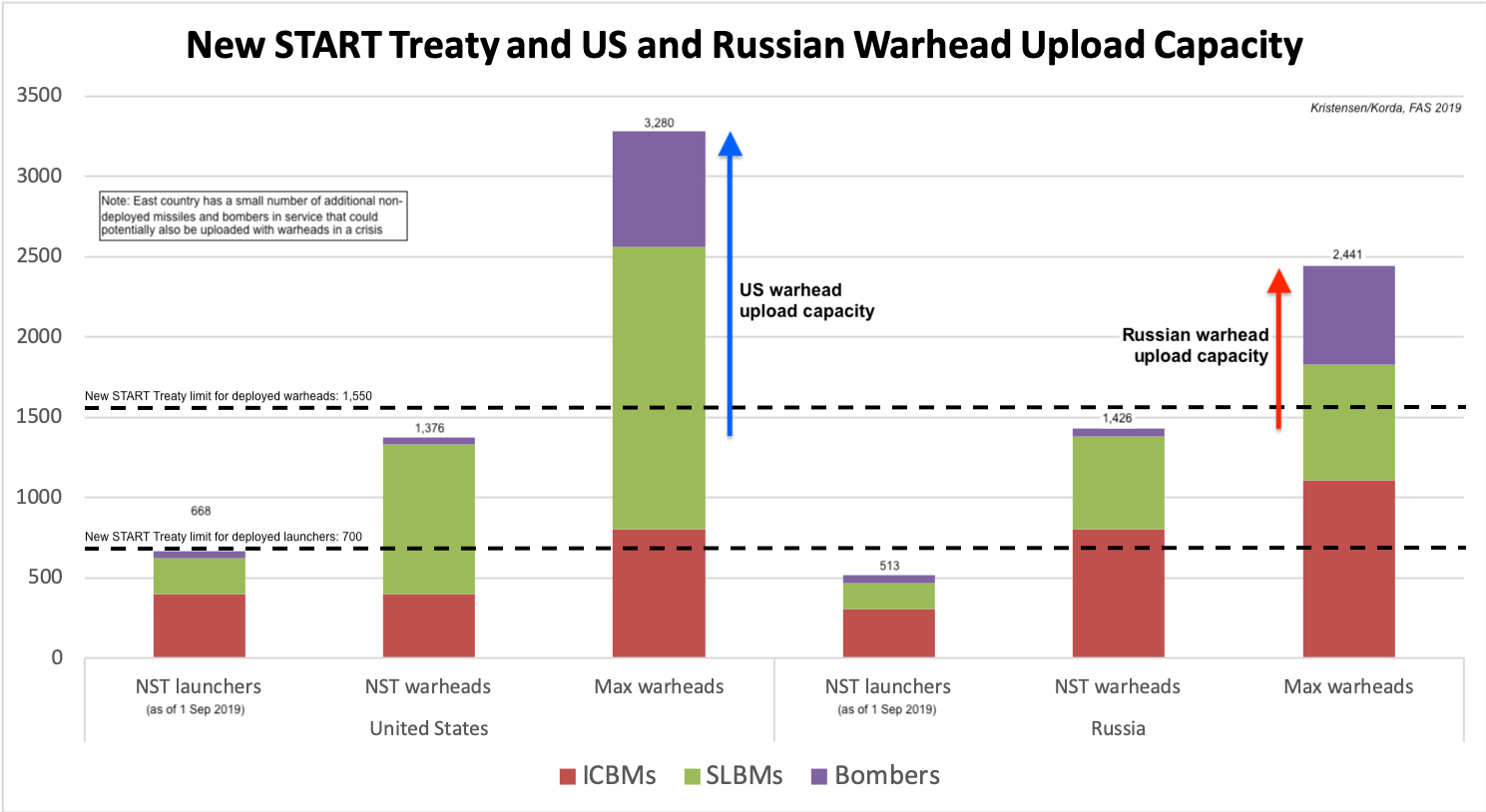
Both Russia and the United States have large warhead inventories that could be added to missiles and bombers if New START treaty expires. Click image to view full size
At a time when NATO-Russian relations are at their lowest since the end of the Cold War, when long-term predictability is more important than in the past three decades, allowing New START constraints to expire is obviously not in the US strategic interest or that of its allies. Very simply, New START is a good deal for both the United States and Russia; it cannot be allowed to expire without replacing it with something better.
2. New START force level is the basis for current nuclear infrastructure plans. Both the United States and Russia have structured their nuclear weapons and industry modernization plans on the assumption that the New START force level will continue, or at least not increase. If New START falls away, those assumptions and modernization plans will have to be revised, resulting in significant additional costs that neither Russia nor the United States can afford.
3. New START offers transparency and predictability in an unstable world. Under the current treaty, the United States receives a notification every time a Russian missile is deployed, every time a missile or bomber moves between bases, and every time a new missile is produced. Without these notifications, the United States would have to spend more money and incur significant risks to get the exact same information through National Technical Means (i.e. satellites and other forms of site monitoring). Russia benefits in the same way.

New START has forced Russia and the United States to reduce deployed strategic nuclear forces. Click image to view full size
Why would we willingly give all that up – to get absolutely nothing in return (and actually pay a steep price for giving it up)?
4. New START has overwhelming bipartisan support––even among Trump voters. Not only is extension a foreign policy priority for Democrats, but polling data indicates that approximately 70% of Trump voters across the country are in favor of extending New START.
Additionally, senior military leaders like the Vice Chairman of the Joint Chiefs of Staff and the commander of Air Force Global Strike Command have expressed support for the treaty. Even one of Trump’s own political appointees, Deputy Secretary of Defense for Policy David Trachtenberg, has testified that that “the transparency and verification requirements of the New START Treaty are a benefit” to the security of the United States.
5. We won’t get another chance. If New START expires next year, arms control between Russia and the United States as we know it is effectively over. Given the underlying East-West tensions and upcoming dramatic governance shifts in both the United States and Russia, there appears to be little interest or bandwidth available on either side in negotiating a new and improved treaty.
Moreover, although future arms control must attempt to incorporate other nuclear-armed states, efforts to do so should not jeopardize New START.
At risk of stating the obvious, negotiating a new treaty is exponentially more difficult than extending an existing one.
6. It’s easy. Extension of New START doesn’t require Congressional legislation or Senate ratification. All it takes is a presidential stroke of a pen. And at the end of 2019, Putin offered to immediately extend the treaty “without any preconditions.” President Trump should immediately take him up on his offer; as of today, he has exactly one year left to do so. But don’t wait till the last minute! Get it done!
Additional information:
- New START Treaty Data Shows Treaty Keeping Lid On Strategic Nukes
- The New START Treaty Keeps Nuclear Arsenals In Check And President Trump Must Act To Preserve It
- Overview: Status of World Nuclear Forces
This publication was made possible by generous contributions from the John D. and Catherine T. MacArthur Foundation, the New Land Foundation, the Ploughshares Fund, and the Prospect Hill Foundation. The statements made and views expressed are solely the responsibility of the authors.
US Deploys New Low-Yield Nuclear Submarine Warhead

The USS Tennessee (SSBN-734) at sea. The Tennessee is believed to have deployed on an operational patrol in late 2019, the first SSBN to deploy with new low-yield W76-2 warhead. (Picture: U.S. Navy)
The US Navy has now deployed the new W76-2 low-yield Trident submarine warhead. The first ballistic missile submarine scheduled to deploy with the new warhead was the USS Tennessee (SSBN-734), which deployed from Kings Bay Submarine Base in Georgia during the final weeks of 2019 for a deterrent patrol in the Atlantic Ocean.
The W76-2 warhead was first announced in the Trump administration’s Nuclear Posture Review (NPR) unveiled in February 2018. There, it was described as a capability to “help counter any mistaken perception of an exploitable ‘gap’ in U.S. regional deterrence capabilities,” a reference to Russia. The justification voiced by the administration was that the United States did not have a “prompt” and useable nuclear capability that could counter – and thus deter – Russian use of its own tactical nuclear capabilities.
We estimate that one or two of the 20 missiles on the USS Tennessee and subsequent subs will be armed with the W76-2, either singly or carrying multiple warheads. Each W76-2 is estimated to have an explosive yield of about five kilotons. The remaining 18 missiles on each submarine like the Tennessee carry either the 90-kiloton W76-1 or the 455-kiloton W88. Each missile can carry up to eight warheads under current loading configurations.
The first W76-2 (known as First Production Unit, or FPU) was completed at Pantex in February 2019. At the time, NNSA said it was “on track to complete the W76-2 Initial Operational Capability warhead quantity and deliver the units to the U.S Navy by the end of Fiscal Year 2019” (30 September 2019). We estimate approximately 50 W76-2 warheads were produced, a low-cost add-on to improved W76 Mod 1 strategic Trident warheads which had just finished their own production run.
The W76-2 Mission
The NPR explicitly justified the W76-2 as a response to Russia allegedly lowering the threshold for first-use of its own tactical nuclear weapons in a limited regional conflict. Nuclear advocates argue that the Kremlin has developed an “escalate-to-deescalate” or “escalate-to-win” nuclear strategy, where it plans to use nuclear weapons if Russia failed in any conventional aggression against NATO. The existence of an actual “escalate-to-deescalate” doctrine is hotly debated, though there is evidence that Russia has war gamed early nuclear use in a European conflict.
Based upon the supposed “escalate-to-deescalate” doctrine, the February 2018 NPR claims that the W76-2 is needed to “help counter any mistaken perception of an exploitable ‘gap’ in U.S. regional deterrence capabilities.” The National Nuclear Security Administration (NNSA) has further explained that the “W76-2 will allow for tailored deterrence in the face of evolving threats” and gives the US “an assured ability to respond in kind to a low-yield nuclear attack.”
Consultants who were involved in producing the NPR have suggested that “[Russian President] Putin may well believe that the United States would not respond with strategic warheads that could cause significant collateral damage” and “that Moscow could conceivably engage in limited nuclear first-use without undue risk…”
There is no firm evidence that a Russian nuclear decision regarding the risk involved in nuclear escalation is dependent on the yield of a US nuclear weapon. Moreover, the United States already has a large number of weapons in its nuclear arsenal that have low-yield options – about 1,000 by our estimate. This includes nuclear cruise missiles for B-52 bombers and B61 gravity bombs for B-2 bombers and tactical fighter jets.
Yes, but – so the W76-2 advocates argue – these low-yield warheads are delivered by aircraft that may not be able to penetrate Russia’s new advanced air-defenses. But the W76-2 on a Trident ballistic missile can. Nuclear advocates also argue the United States would be constrained from employing fighter aircraft-based B61 nuclear bombs or “self-deterred” from employing more powerful strategic nuclear weapons. In addition to penetration of Russian air defenses, there is also the question of NATO alliance consultation and approval of an American nuclear strike. Only a low-yield and quick reaction ballistic-missile can restore deterrence, they say. Or so the argument goes.
All of this sounds like good old-fashioned Cold War warfighting. In the past, every tactical nuclear weapon has been justified with this line of argument, that smaller yields and “prompt” use – once achieved through forward European basing of thousands of warheads – was needed to deter. Now the low-yield W76-2 warhead gives the United States a weapon its advocates say is more useable, and thus more effective as a deterrent, really no change from previous articulations of nuclear strategy.
The authors of the NPR also saw the dilemma of suggesting a more usable weapon. They thus explained that the W76-2 was “not intended to enable, nor does it enable, ‘nuclear war-fighting.’ Nor will it lower the nuclear threshold.” In other words, while Russian low-yield nuclear weapons lower the threshold making nuclear use more likely, U.S. low-yield weapons instead “raise the nuclear threshold” and make nuclear use less likely. Undersecretary of Defense for Policy John Rood even told reporters that the W76-2 would be “very stabilizing” and in no way supports U.S. early use of nuclear weapons, even though the Nuclear Posture Review explicitly stated the warhead was needed for “prompt response” strike options against Russian early use of nuclear weapons.
“Prompt response” means that strategic Trident submarines in a W76-2 scenario would be used as tactical nuclear weapons, potentially in a first use scenario or immediately after Russia escalated, thus forming the United States’ own “escalate-to-deescalate” capability. The United States has refused to rule out first use of nuclear weapons.
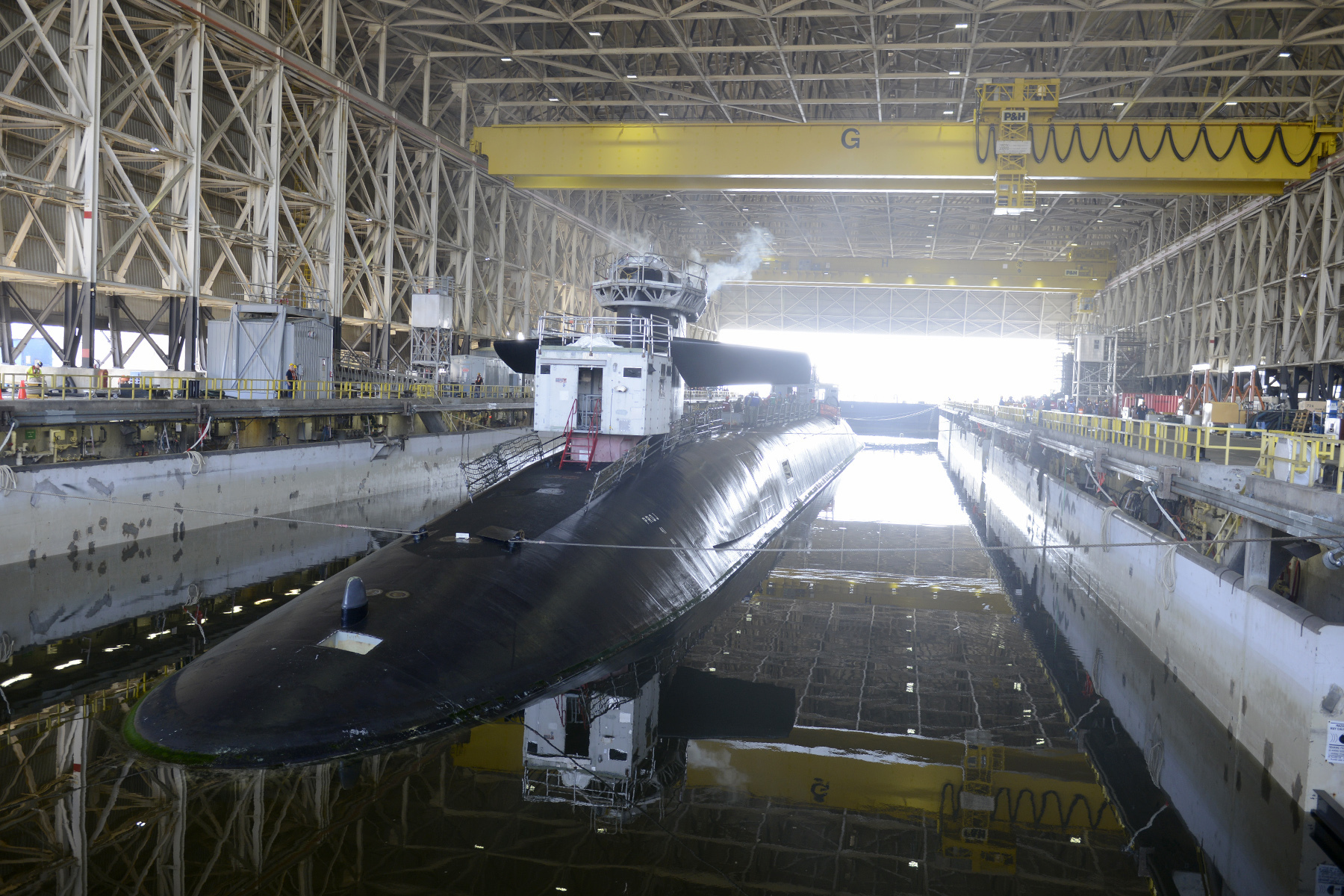
The USS Tennessee (SSBN-734) in drydock at Kings Bay submarine base in September 2019 shortly before it returned to active duty and loaded with Trident D5 missiles carrying the new low-yield W76-2 warhead. (Photo: U.S. Navy)
Since the United States ceased allocating some of its missile submarines to NATO command in the late-1980s, U.S. planners have been reluctant to allocate strategic ballistic missiles to limited theater tasks. Instead, NATO’s possession of dual-capable aircraft and increasingly U.S. long-range bombers on Bomber Assurance and Deterrence Operations (BAAD) – now Bomber Task Force operations – have been seen as the most appropriate way to slow down regional escalation scenarios. The prompt W76-2 mission changes this strategy.
In the case of the W76-2, carried onboard a submarine otherwise part of the strategic nuclear force, amidst a war Russia would have to determine that a tactical launch of one or a few low-yield Tridents was not, in fact, the opening phase of a much larger escalation to strategic nuclear war. Thus, it seems inconceivable that any President would approve employment of the W76-2 against Russia; deployment on the Trident submarine might actually self-deter.
Though almost all of the discussion about the new W76-2 has focused on Russia scenarios, it is much more likely that the new low-yield weapon is intended to facilitate first-use of nuclear weapons against North Korea or Iran. The National Security Strategy and the NPR both describe a role for nuclear weapons against “non-nuclear strategic attacks, and large-scale conventional aggression.” And the NPR explicitly says the W76-2 is intended to “expand the range of credible U.S. options for responding to nuclear or non-nuclear strategic attack.” Indeed, nuclear planning against Iran is reportedly accelerating, B-2 bomber attacks are currently the force allocated but the new W76-2 is likely to be incorporated into U.S. Central Command (CENTCOM) war planning.
Cheap, Quick, Simple, But Poorly Understood
In justifying the W76-2 since the February 2018 NPR, DOD has emphasized that production and deployment could be done fast, was simple to do, and wouldn’t cost very much. But the warhead emerged well before the Trump administration. The Project Atom report published by the Center for Strategic and International Studies in 2015 included recommendations for a broad range of low-yield weapons, including on long-range ballistic missiles. And shortly after the election of President Trump, the Defense Science Board’s defense priority recommendations for the new administration included “lower yield, primary-only options.” (This refers to the fact that the W76-2 is essentially little different than the strategic W76-1, “turning off” the thermonuclear secondary and thus facilitating rapid production.)
Initially, the military interest in a new weapon seemed limited. When then STRATCOM commander General John E. Hyten (now Vice Chairman of the Joint Chiefs of Staff) was asked during Congressional hearings in March 2017 about the military need for lower-yield nuclear weapons, he didn’t answer with a yes or no but explained the U.S. arsenal already had a wide range of yields:
Rep. Garamendi: The Defense Science Board, in their seven defense priorities for the new administration, recommended expanding our nuclear options, including deploying low yield weapons on strategic delivery systems. Is there a military requirement for these new weapons?
Gen. Hyten: So Congressman, that’s a great conversation to tomorrow when I can tell you the details [in closed classified session], but from a — from a big picture perspective in — in a public hearing, I can tell you that our force structure now actually has a number of capabilities that provide the president of the United States a variety of options to respond to any numbers of threats.
Later that month, in an interview at the Military Reporters and Editors Conference, Hyten elaborated further that the United States already had very flexible military capabilities to respond to Russian use of tactical nuclear weapons:
John Donnelly (Congressional Quarterly Roll Call): The Defense Science Board, among others, has advocated development of new options for maneuvering lower yield nuclear warheads instead of just air delivered, talking basically about ICBM, SLBM. The thinking, I think, is that given the Russian escalate to win, if you like, or escalate to deescalate doctrine, the United States needs to have more options. What do you think about, that is my question. Especially in light of the fact that there are those who are concerned that this further institutionalizes the idea that you can fight and maybe even win a limited nuclear war.
Gen. Hyten: …we’re going to look at that in the Nuclear Posture Review over the next six months. I think it’s a valid question to ask, but I’ll just tell you what I’ve said in public up until this point, and as we go into the Nuclear Posture Review.
…in the past and where I am right now is that I’ll just say that the plans that we have right now, one of the things that surprised me most when I took command on November 3 was the flexible options that are in all the plans today. So we actually have very flexible options in our plans. So if something bad happens in the world and there’s a response and I’m on the phone with the Secretary of Defense and the President and the entire staff, which is the Attorney General, Secretary of State and everybody, I actually have a series of very flexible options from conventional all the way up to large-scale nuke that I can advise the President on to give him options on what he would want to do.
So I’m very comfortable today with the flexibility of our response options. Whether the President of the United States and his team believes that that gives him enough flexibility is his call. So we’ll look at that in the Nuclear Posture Review. But I’ve said publicly in the past that our plans now are very flexible.
And the reason I was surprised when I got to STRATCOM about the flexibility, is because the last time I executed or was involved in the execution of the nuclear plan was about 20 years ago and there was no flexibility in the plan. It was big, it was huge, it was massively destructive. … We now have conventional responses all the way up to the nuclear responses, and I think that’s a very healthy thing. So I’m comfortable with where we are today, but we’ll look at it in the Nuclear Posture Review again.
During the Trump NPR process, however, the tone changed. Almost one year to the day after Hyten said he was comfortable with the existing capabilities, he told lawmakers he needed a low-yield warhead after all: “I strongly agree with the need for a low-yield nuclear weapon. That capability is a deterrence weapon to respond to the threat that Russia, in particular, is portraying.”
While nuclear advocates were quick to take advantage of the new administration to get approval for new nuclear weapons they said were needed to now respond to Russia’s supposed “escalate-to-deescalate” strategy, efforts to engage Moscow to discuss nuclear strategy and their impact on nuclear arsenals are harder to find. See, for example, this written correspondence between Representative Susan Davis and General Hyten:
Rep. Davis: Have you ever had a discussion with Russia about their nuclear posture, and in particular an escalate-to-de-escalate (E2D) strategy, which the Nuclear Posture Review claims is part of Russia’s nuclear doctrine? How did they respond? Do you view this doctrine as offensive or defensive in nature?
Gen. Hyten: I would like to have such a discussion, but I have never had a conversation with Russia about their nuclear posture.
During the Fiscal Year 2019 budget debate, Democrats argued strongly against the new low-yield W76-2, and opposition increased on Capitol Hill after the 2018 mid-term elections gave Democrats control of the House of Representatives. But given the relatively low cost of the W76-2, and the fact that it was conveyed as merely an “add-on” to an already hot W76 production line, little progress was made by opponents. Reluctantly accepting production of the warhead in the FY 2019 defense budget, opponents again in August 2019 tried to block funding in the FY 2020 defense budget arguing the new warhead “is a dangerous, costly, unnecessary, and redundant addition to the U.S. nuclear arsenal,” and that it “would reduce the threshold for nuclear use and make nuclear escalation more likely.” When the Republican Senate majority refused to accept the House’s sense, Democrats caved.
Just a few months later, the first W76-2 warheads sailed into the Atlantic Ocean onboard the USS Tennessee.
* William M. Arkin is a journalist and consultant to FAS
For a detailed overview of the U.S. nuclear arsenal, see our latest Nuclear Notebook: United States nuclear forces, 2020
This publication was made possible by generous contributions from the John D. and Catherine T. MacArthur Foundation, the New Land Foundation, the Ploughshares Fund, and the Prospect Hill Foundation. The statements made and views expressed are solely the responsibility of the authors.
What do Putin’s constitutional changes mean for Russian nuclear launch authority?
For years, Russia analysts have speculated about the future of Russian political leadership after 2024, when Vladimir Putin will be constitutionally mandated to vacate the Presidency.
During Putin’s annual State of the Nation address, we finally got our first taste of what to expect.
Instead of today’s highly-centralized Presidency, under the proposed changes the power of the Presidency will be somewhat reduced, while the power of the Prime Minister, as well as both the Duma and the Federation Council (the lower and upper houses of parliament) will be increased––thus ensuring a system of several relatively balanced government entities, none of which are theoretically strong enough to overpower the others. Putin will likely remain at the top of the pyramid in a new “father-of-the-nation” type of role (possibly as the head of the newly-empowered State Council, or perhaps in another role entirely). This new system would allow him to retain power after 2024, and would signal the most dramatic shift in Russian constitutional authority since the document was adopted in 1993.
This shift in power, however, poses a series of complications for Russia’s system of nuclear launch authority.
Under Article 87.1 of the Russian Constitution, the President is the Supreme Commander-in-Chief of the Armed Forces, and the Law On Defence states that the Supreme Commander-in-Chief is the ultimate authority on all nuclear-related matter. Additionally, the current Russian military doctrine states that “The decision to use nuclear weapons shall be taken by the President of the Russian Federation.” To that end, the President possesses a Cheget briefcase, which allows the President to monitor strategic crises and transmit nuclear command decisions through the Kazbek command and control network, using the Kavkaz special communications system.
Acting President Putin with the Cheget nuclear briefcase (kremlin.ru, 1999).
In addition to the President, it is widely believed that both the Defense Minister and the Chief of the General Staff also possess Cheget briefcases, although ultimate launch authority rests with the President. Given the tremendous secrecy surrounding Russian nuclear launch authority, these extra briefcases pose a bit of a mystery. It is possible that the additional two briefcases might act as a form of validation or check against the President’s nuclear launch decision (this is implied in Valery E. Yarynich’s C3: Nuclear Command, Control, Cooperation, in which he states that these three individuals “together prepare the authorization for the use of nuclear weapons”); however, given that neither the Defense Minister nor the Chief of the General Staff are constitutionally or doctrinally designated as nuclear decision-makers, it seems more likely that their briefcases would function as (potentially necessary) links in the chain of command, which would be used to transmit the President’s nuclear launch order down to the relevant launch and warhead custodial units.
Interestingly, the Prime Minister appears to have no nuclear decision-making authority and does not possess a Cheget briefcase. This is odd, considering the fact that under the Constitution, if the President is incapacitated then the Prime Minister assumes all presidential duties––which would presumably include the authority to launch nuclear weapons. The apparent absence of the Prime Minister in the nuclear chain of command prompts a question highlighted by Jeffrey Lewis and Bruno Tertrais in their recent overview of nuclear launch authority: “When Dmitry Medvedev held the presidency during 2008–12, and Vladimir Putin was prime minister, was Medvedev authorized to use nuclear weapons without Putin’s approval?”
We don’t know the answer to this question, but it has significant implications for Putin’s proposed constitutional changes. If Putin was comfortable being formally left out of the nuclear chain of command for those four years, he might be similarly comfortable being kept out of the loop after he vacates the Presidency. If so, then the current nuclear command system could be maintained even after the Constitution is revised, and Putin would have to trust that his Presidential successor would informally follow his direction on nuclear policy.
The Cheget nuclear briefcase transfer from Medvedev to Putin during his 2012 presidential inauguration (kremlin.ru, 2012)
However, it is also possible––although perhaps unlikely, depending on your assessment of Putin’s intentions––that ultimate nuclear launch authority will follow Putin wherever he goes. This would mean that if the proposed constitutional changes are adopted, the chain of command and their associated laws would also need to be revised in order to reflect Putin’s new position.
According to the bill submitted to the Russian parliament, the proposed changes will constitutionally empower the State Council to determine “the main directions of home and foreign policy.” Absent more details, it is unclear whether this would include nuclear launch authority. However, if Putin becomes the head of the State Council, as some analysts are predicting, it is possible that the military doctrine would be revised to empower him––and not the President––as the ultimate nuclear decision-maker. If so, the President’s Cheget would either be transferred to Putin’s new position, or else Russia would need to deploy a fourth briefcase.
This would be an interesting development, as Putin additionally noted in his speech that the President should still be in charge of the Russian military. If the President did remain Commander-in-Chief, but control of nuclear weapons transferred from the Presidency to Putin’s new position, this would mark a new precedent in nuclear policy: the first time that the Commander-in-Chief of a nuclear-armed state was not also the ultimate nuclear decision-maker (the one exception to this rule is the United Kingdom, where the Queen is technically the Commander-in-Chief; however, both the armed forces and Trident nuclear submarines are de facto commanded by the Prime Minister).
The situation in Russia is shifting quite rapidly, and absent more details about how Putin intends to define the balance of power after 2024, one can only speculate as to how nuclear launch authority will develop under these new constitutional changes. But unless Putin decides to declare himself “President-for-Life” à la Xi Jinping, he will have no choice but to redesign Russia’s nuclear launch authority if he intends to keep his finger on the nuclear button.
This publication was made possible by generous contributions from the Carnegie Corporation of New York, the John D. and Catherine T. MacArthur Foundation, the New Land Foundation, the Ploughshares Fund, and the Prospect Hill Foundation. The statements made and views expressed are solely the responsibility of the authors.
China’s New DF-26 Missile Shows Up At Base In Eastern China
Pictures taken recently by Maxar Technologies’ satellites show a large number of launchers for the DF-26 intermediate-range missile operating at a training site approximately 9 kilometers (5.7 miles) south of Qingzhou City in China’s Shandong Province.
This is the first time the DF-26 has been seen operating in the area and marks a new phase in the integration of the missile into the Chinese military. The DF-26 is dual-capable, which means it can deliver both nuclear and conventional warheads and is thought to have a range of approximately 4,000 kilometers (2,490 miles). The DF-26 was first fielded in 2016 and the Pentagon’s 2019 report on Chinese military developments estimated China has up to 80 DF-26 launchers with 80-160 missiles (each launcher may have one reload).
The DF-26 is an INF-weapons, which means its range puts it in the category of ground-launched missiles that Russia and the United States banned in their arsenals for 32 years until Russia violated the treaty and the United States withdrew in protest.
China’s first DF-26 brigade stood up in April 2018 approximately 630 kilometers (390 miles) southwest of Qingzhou outside Xinyang in Henan Province. Over the past two years, DF-26s have appeared at several locations across China and significant production is visible at a factory outside Beijing.
DF-26 Sightings At Qingzhou
The Qingzhou site has been active for many decades and appears to be part of a missile support base operated by the People’s Liberation Army Rocket Force (PLARF). CIA initially identified the location as I-TU, a misspelling of its former name Yidu County, since changed to Qingzhou. The main base is located in the southwest district of the city [36.6774°, 118.4541°] and includes three large high-bay garages for servicing missile launchers. Over the years, several nuclear missile launchers have been seen operating there: DF-3A IRBM, DF-21 SRBM, DF-31/A ICBM, and now DF-26 IRBM.
The facility where the DF-26s recently appeared is about 9 kilometers (5.7 miles) of Qingzhou to the south near a location identified on Google Earth as Zhuanghanmiaocun. The DF-26 launchers first appeared there on satellite images in November 2019, when a dozen launchers were seen. In early January 2020, Google Earth loaded a Maxar image dated December 11, 2019 (note: image dates displayed on Google Earth are for some reason one day early compared to the actual date the image was taken), which was first described by Twitter user @DexReloaded. During December, several images taken by Maxar satellites show up to 18 DF-26 launchers, approximately the same number that was displayed at Xinyang in 2018 and at Jilantai in 2019.
The most recent image dated January 8, 2020, shows two groups of DF-26 launchers: one to the north (36.6026°, 118.4803°), between garages and on an old DF-3A circular launch pad; and a second group to the south (36.5999°, 118.4835°) on a cleared space where a former DF-31 launch pad is still visible. Also visible on the image are numerous support vehicles needed to support or repair the launchers when deployed. The DF-26 launchers are probably at the site as part of their integration into a new brigade.
DF-26 Sightings Elsewhere
As mentioned above, China stood up its first DF-26 unit in 2018. An image from the activation ceremony shows 24 trucks parked under a temporary cover: 18 DF-26 TELs and 4 support vehicles. If each brigade has 18 launchers, then the 80 launchers reported by the Pentagon would be sufficient for four brigades. Not all have become operational yet but DF-26s are beginning to appear at various sites across China: Xinyang (Henan), Qingzhou (Shandong), Dengshahe (Liaoning), Korla (Xinjiang), possibly Jinhua (Anhui), and the large training area at Jilantai (Inner Mongolia).
The standing up of the first DF-26 brigade at Xinyang in April 2018 was announced on Chinese news media with pictures and videos from the ceremony. But even before that, in January 2018, DF-26 launchers showed up at the field training site of the 651st Brigade near Dengshahe northeast of Dalian (Liaoning).
Then, in January 2019, Chinese media announced that DF-26s had carried out an exercise in the “Northwest China’s plateau and desert areas.” The operation was later geo-located to the large new training area west of Jilantai (Inner Mongolia), where they continued to train in April-May 2019 together with DF-41s, DF-31AGs, and DF-17s before being shipped to Beijing for the parade in September 2019.
DF-26 training at Jilantai has been a favorite propaganda tool for the Chinese government with several test-launches shown on various news media outlets (here and here). A propaganda documentary jointly produced by the Political Bureau of the Central Military Commission and the PLA News and Communication Center and broadcast by CCTV by the end of 2019 included a brief clip showing a DF-26 launch. The launch site is geolocated in the figure below:
During those months, DF-26 launchers were also seen operating at the 646 Brigade base in Korla (Ku’erle) in the Xinjiang province in western China. The first launcher was seen in April and two more in August 2019 (see image below).
DF-26 Production And Numbers
The Pentagon estimated in 2019 that China had fielded up to 80 DF-26 launchers. Not all of those are fully operationally deployed; some brigades are still being equipped. Noted China military expert Mark Stokes estimated maybe two or three DF-26 brigades a year ago, each with 6-12 launchers. So the display of 18 launchers at Xinyang and Qingzhou is obviously interesting: did it include 6-12 launchers from a second brigade or will DF-26 brigades have more launchers?
Eighteen launchers were also the number seen operating at Jilantai.
DF-26 launchers are produced at a factory near Fangshan in the outskirt of Beijing. The factory has been expanded significantly during the past decade with several large vehicle assembly halls added. The factory also appears to be involved in the production of DF-21 MRBM launchers as well as various air-defense systems. The main parking area for DF-26 launchers is in the middle of the southern end of the complex (see image below).
The first DF-26 launcher at Fangshan appeared on satellite images in March 2009 and four or five launchers were normally visible through 2016 when deployment began. The number of visible launchers increased in late-2017 and early-2018 to 15-25, and increased in late-2018 and early-2019 to 20-38 launcher, until reaching 51 visible launchers in early September 2019. Not all of the launchers seen were fully assembled; of the 51 launchers visible in September 2019, for example, only 38 appeared to be complete. The various stages of assembly are clearly visible on the images (see image below).
How does the Pentagon’s China report get to 80 DF-26 launchers? The report doesn’t explicitly say the 80 are fielded or deployed and the operational brigades and launchers seen at training areas do not add up to 80 – that number is less than 60. It seems likely the DOD estimate includes at least some of the launchers in production at Fangshan. As illustrated above, those launchers include some that are not finished but at various stages of assembly.
If one adds up all the Fangshan launchers that appear complete (those with missile canister installed), the number was about 40 in mid-2018, when DOD reported 16-30 launchers. By mid-2019, when DOD reported 80 launchers, the total number of completed launchers at Fangshan was about 50. Such a count does not accurately show how many launchers were complete because the available images were not evenly distributed over time; some were taken only a few days or weeks apart and there were month-long gaps between others. Nonetheless, it does indicate that the DOD estimate of 80 launchers likely included complete launchers at the Fangshan factory in addition to those deployed at the brigade bases and training areas.
DF-26 Implications
The “new” about the DF-26 is not that it can target Guam (other missiles have been able to do so for decades); it is that it can do so with an accurate conventional warhead. But there are also other reasons why the deployment of additional new DF-26s at Qingzhou and other locations, as well as the considerable production that is underway, is important.
The first reason is the growing size and diversity of the Chinese nuclear arsenal. China officially maintains what it calls a minimum deterrent focused on ensuring it has a secure retaliatory capability to respond to a nuclear attack. Compared with Russia and the United States, the Chinese nuclear arsenal is small; but compared with France, Britain, and India, the Chinese arsenal is significant. And it is increasing further with China about to overtake France as the world’s third-largest nuclear-weapon state. China’s arsenal has nearly doubled over the past 15 years and is expected to increase further over the next decade, although perhaps not as much as some say. There is no indication China is seeking numerical parity (or near-parity) with Russia and the United States or changing its nuclear strategy. Yet the apparently open-ended growth of the Chinese nuclear arsenal is deepening uncertainty and anxiety in neighboring countries and other nuclear-armed states about China’s long-term intentions.
China’s rejection of such concerns is well-known but counterproductive because it will fuel the development and deployment of military capabilities that China will see as growing threats to its national security. The Chinese government could help alleviate concerns and worst-case response by issuing factual statements about the status and future plans for its nuclear arsenal. This would not require disclosing everything, but as a growing military power, the days are over when China can hide behind the larger nuclear powers.
A second reason the growing DF-26 deployment is important is that it is a dual-capable weapon that can deliver either a conventional or a nuclear warhead. The inability to clearly distinguish the two creates significant challenges for crisis stability and escalation scenarios. In a tense crisis or a war, Chinese readying of conventionally-armed DF-26 launchers could easily be misinterpreted as preparations to employ nuclear weapons and cause an adversary to ready its nuclear weapons unnecessarily and precipitately. If China launched a conventionally-armed DF-26, the target country might assume the worst and prematurely escalate to nuclear use. This dilemma is exacerbated by the fact that the conventional DF-26 is part of the PLARF’s conventional missile strike force intended to provide pre-nuclear strike options, a force that in a potential war with the United States would likely be subject to focused and intense conventional strikes. If the United States used conventional weapons to target what it perceived was conventional DF-26 launchers, China might conclude that the United States had attacked its nuclear forces and escalate accordingly.
A fourth reason the growing DF-26 deployment is important is that the payload section is guided and, according to DOD, is “capable of near-precision strike capability” against land targets. Retaliatory nuclear deterrence does not require near-precision, but warfighting could. As such, Chinese deployment of highly accurate, quick-strike, dual-capable weapons could further deepen uncertainty and speculations about Chinese nuclear strategy. It could potentially also influence Chinese considerations about sub-strategic uses of nuclear weapons in de-escalation scenarios.
Finally, the DF-26 deployment is important because the missile is part of China’s growing inventory of INF-range weapons. Russia’s violation of the INF treaty was probably partially a response to China’s growing inventory of INF-range missiles, and the United States used China as part of its justification for withdrawing from the INF treaty and is developing several INF missiles that it plans to deploy within range of China. Russian and US deployment of INF missiles near China will likely further stimulate China’s production of INF-range weapons and potentially result in a destabilizing INF arms race in the Pacific.
For these reasons, it is important that China provides more information about its future plans for the development of its missile forces and engage in ongoing official discussions about the scope and role of its nuclear deterrent, including INF forces. And although China is unlikely to join US-Russian strategic agreements in the foreseeable future, Beijing should already now begin to develop options for what it could offer and what it would want in return if joining such agreements in the future. This could include articulating which US (and Indian) capabilities China is most concerned about and what Beijing would offer in return for limits on them. As a goodwill gesture, China could also offer unilateral limits on its INF capabilities in return for the US and Russia not deploying new INF systems in the region. Information and limits on the dual-capable DF-26 would be a good start.
This publication was made possible by generous contributions from the Carnegie Corporation of New York, the John D. and Catherine T. MacArthur Foundation, the New Land Foundation, the Ploughshares Fund, and the Prospect Hill Foundation. The statements made and views expressed are solely the responsibility of the authors.
NNSA Moves to Expand Plutonium Pit Production
The National Nuclear Security Administration said last week that it will proceed with a plan to sharply expand production of plutonium “pits” — the explosive triggers for thermonuclear weapons — without performing a full “programmatic” environmental review.
NNSA envisions producing “no fewer than 80 pits per year by 2030,” including a minimum of 30 pits per year at Los Alamos National Laboratory and a minimum of 50 pits per year at the Savannah River Site. Currently, “less than 20 per year” are produced, all at Los Alamos.
It is “NNSA’s determination that no further NEPA [National Environmental Policy Act] documentation at a programmatic level is required,” the agency said in a January 8 Federal Register notice. (Site-specific assessments will still be prepared for plutonium pit production at Los Alamos National Lab and the Savannah River Site.)
Environmental and anti-nuclear groups cried foul. “NNSA’s refusal to complete programmatic environmental review before plunging ahead with plans to more than quadruple the production authorization for plutonium bomb cores flies in the face of our country’s foundational environmental law, the National Environmental Policy Act, and a standing federal court order mandating that the government conduct such a review,” said Marylia Kelley of Tri-Valley CAREs.
In response to public comments challenging the basis for increased pit production, NNSA said that it is obliged by law to pursue the goal of producing “no fewer than 80 plutonium pits per year by 2030.” (The exact numbers are classified.)
“These requirements are contained in federal law and national policy,” the agency said. “Contentions that there is no need for new pits are not consistent with federal law, the 2018 NPR [Nuclear Posture Review], and national policy.”
That doesn’t mean that the new pit production goal is sensible (or achievable). “The 80 pits/year requirement comes from dividing 4,000 pits by 50 years,” said Frank von Hippel of Princeton University. “We have fewer than 2,000 pits deployed. Do we need to refabricate twice as many?” (See also “Why 80? Defense leaders discuss the need for plutonium pits,” Aiken Standard, December 28).
Meanwhile, Congress has substantially increased funding for new pit production. Details of recent budget action in this area were described in “Energy and Water Development Appropriations: Nuclear Weapons Activities,” Congressional Research Service, updated January 6, 2020 (see esp. “strategic materials,” pp. 10-11).
NNSA explained its view of the need to proceed with expanded pit production, including responses to public comments, in a December 2019 Final Supplement Analysis.
“The size and composition of the U.S. nuclear weapons stockpile is determined annually by the President,” NNSA said. The agency “lacks discretion to consider alternatives outside of national policy.”
* * *
Plutonium aging and its implications for new pit production were discussed by the JASON science advisory panel in a new letter report to the Department of Energy. See Pit Aging, November 23, 2019.
The JASONs affirm that plutonium pit aging — which can result in degraded performance over the long term — is a real phenomenon, but they said that for now this does not create any “impending issues” for the nuclear weapons stockpile. They note that there are uncertainties in the data on aging and in the corresponding modeling, and that there are steps that can be taken to reduce those uncertainties and to mitigate the effects of aging. Nevertheless, they say, pit manufacturing should be reestablished as expeditiously as possible.
The letter report, which is an unclassified overview of a longer classified report, is not the JASONs’ most illuminating work.
It is conclusory and “it provides no data at all on anything” to support its call for expedited pit production, said Stephen Young of the Union of Concerned Scientists. “It is completely different than the ground-breaking 2007 [JASON] report, which gave a clear, concrete assessment of pit lifetime that was far beyond previous public estimates.”
Still, some insight can be gleaned from the new report, said Steve Fetter of the University of Maryland.
“The most interesting sentence in this unclassified JASON summary is: ‘A focused program of experiments, theory, and simulations is required to determine the timescales over which Pu [plutonium] aging may lead to unacceptable degradation in primary performance’.”
“This implies that experiments, theory, and simulations conducted to date have not established such timescales,” Fetter said. “In other words, there is still no answer to the question, ‘at what point does Pu aging degrade primary performance’?”
According to the 2007 JASON report, “Most primary types have credible minimum lifetimes in excess of 100 years as regards aging of plutonium.” Nearly all currently stockpiled pits were produced between 1978 and 1989.
* * *
Recently updated reports from the Congressional Research Service on nuclear weapons include the following.
U.S. Strategic Nuclear Forces: Background, Developments, and Issues, updated January 3, 2020
Russia’s Nuclear Weapons: Doctrine, Forces, and Modernization, updated January 2, 2020
A Low-Yield, Submarine-Launched Nuclear Warhead: Overview of the Expert Debate, CRS In Focus, updated January 10, 2020
Defense Primer: Strategic Nuclear Forces, CRS In Focus, updated January 10, 2020
Defense Primer: Command and Control of Nuclear Forces, CRS In Focus, updated January 10, 2020
* * *
For the second year in a row, the Department of Defense has refused to reveal the current size of the U.S. nuclear arsenal.
The nuclear weapon stockpile numbers had previously been declassified and disclosed for each year through 2017. No justification for the change in disclosure policy was provided.
Conventional Deterrence of North Korea
The debate over whether North Korea could be deterred was eclipsed by the onset of negotiations in 2018. Yet, the last three years have been marked by rapid advancements in the regime’s military capabilities and apparent evolution in its military strategy, which now relies on the threat of preemptive attacks against allied conventional forces to limit damage to the regime. Many of the standard assumptions that have underwritten U.S.-ROK deterrence posture are now obsolete. The deterrence balance on the peninsula is now between DPRK nuclear forces and allied conventional forces. Allied deterrence posture that depends on the threat of nuclear use or invasion will be insufficient to deter the regime from attempting to impose a fait accompli to forcibly achieve limited objectives. The alliance must place conventional deterrence at the center of its planning to ensure that U.S. conventional forces can effectively supplement South Korea’s ability growing ability to defend itself from limited aggression. The proposed posture requires closer coordination and additional capability, a difficult but necessary step at a time when the alliance faces severe friction.
A Rare Look Inside a Russian ICBM Base
It’s relatively easy to observe Russian missile bases from above. It’s much harder to do it from inside.
But in September, the Russian Ministry of Defense released a rare video of a command exercise which features mobile SS-27 Mod 2 “Yars-S” ICBMs driving around their base near Novosibirsk.
The base itself, which is likely to be the temporary home of the 382nd Guards Missile Regiment, has a relatively strange layout, which makes it significantly easier to identify. Unlike other Yars bases in the 39th Guards Missile Division (which houses the 382nd Regiment)––or even across the region––this base does not have any vehicle garages. Instead, the Yars launchers and support vehicles are simply parked out in the open, usually under camouflage (although they occasionally mix up their camouflage, weirdly replacing the forest green with snowy white well before any snow actually touches the ground!).
The September video shows Russian troops uncovering their ICBMs, taking them out for a spin, and eventually tucking them back in under camouflage blankets.
This regiment––along with the other two Novosibirsk bases associated with the 39th Guards Missile Division––recently completed its long-awaited conversion to Yars ICBMs from its older SS-25 Topol ICBMs. These new missiles are clearly visible in both satellite imagery and in the Ministry of Defense video.
During its conversion, the regiment was moved from its previous base (55°19’2.72”N, 83°10’6.70”E) to this temporary location, while the old base was dismantled in preparation for a substantial upgrade to build new missile shelters for the Yars ICBMs, as well as service and administrative buildings. Construction stalled for several years, possibly because of budget cuts, but has recently picked up again. Once completed, the 382nd Guards Missile Regiment presumably will be relocated back to its old base.
As we write in the Nuclear Notebook, Russia continues to retire its SS-25s at a rate of one or two regiments (nine to 18 missiles) each year, replacing them with newer Yars ICBMs. It is unclear how many SS-25s remain in the active missile force; however, we estimate that it is approximately 54. The remaining two SS-25 equipped divisions will start their upgrades to Yars in 2020, with the SS-25s expected to be fully retired in 2021-2022, according to the commander of Russia’s Strategic Rocket Forces.
Read more about Russia’s nuclear forces in the 2019 Russian Nuclear Notebook, which is always freely-accessible via the Bulletin of the Atomic Scientists.
Urgent: Move US Nuclear Weapons Out Of Turkey
Should the U.S. Air Force withdraw the roughly 50 B61 nuclear bombs it stores at the Incirlik Air Base in Turkey? The question has come to a head after Turkey’s invasion of Syria, Erdogan’s increasingly authoritarian leadership and deepening discord with NATO, Trump’s inability to manage U.S. security interests in Europe and the Middle East, and war-torn Syria only a few hundred miles from the largest U.S. nuclear weapons storage site in Europe.
According to The New York Times, State and Energy Department (?) officials last weekend quietly reviewed plans for evacuating the weapons from Incirlik. “Those weapons, one senior official said, were now essentially Erdogan’s hostages. To fly them out of Incirlik would be to mark the de facto end of the Turkish-American alliance. To keep them there, though, is to perpetuate a nuclear vulnerability that should have been eliminated years ago.”
That review is long overdue! [Actually, I’ve heard there have been several reviews and a lively internal debate since the 2016 coup attempt.] Some of us have been calling for withdrawal for years (see here and here), but officials have resisted saying it wasn’t as bad as it looked and that the deployment still served a purpose. They were wrong. And by waiting so long to act, the United States has painted itself into a corner where the choice between nuclear security and abandoning Turkey has become unnecessarily stark and urgent.
The situation is even more untenable because Incirlik in just a few years is scheduled to receive a large shipment of the new B61-12 guided nuclear bomb, which would be a recommitment to nuclear deployment in Turkey.
This year is the 60th anniversary of the first deployment of nuclear weapons to Turkey. It is time to bring them home.
Nuclear Weapons At Incirlik
The specific reference in the New York Times article made by officials to nuclear weapons at Incirlik is the most recent and authoritative confirmation that nuclear weapons are still stored at the base. That confirms what I have been hearing and sources at US Air Forces Europe confirmed the report, telling William Arkin the weapons are still there. There have been rumors the weapons were removed after the coup attempt in 2016 (and some really bad disinformation that they had been moved to Romania). All of those rumors were wrong. An article on the official Incirlik Air Base web site even confirms that the mission of the 39th Operations Support Squadron is “to orchestrate and control US, Turkish, and coalition forces operating at Incirlik Airbase in the execution of full-spectrum airpower and nuclear deterrent operations” (emphasis added). Given that the article will likely be removed now that I have pointed this out, it is reproduced in full below:
I have estimated for the past several years that the Air Force stores about 50 B61 nuclear gravity bombs at Incirlik, one-third of the 150 nuclear weapons currently deployed in Europe (see figure below). This estimate has been used by a wide range of news reports and commentators. The number of bombs at Incirlik has decreased over the past two decades from 90 in 2000. In those days, 40 of the 90 bombs were earmarked for delivery by Turkish F-16s. Those 40 bombs used to be stored in 6 vaults at both Akinci AB and Balikesir AB (20 at each) until they were moved to Incirlik when the US Air Force withdrew its Munition Support Squadrons from the Turkish bases in 1996. The 40 “Turkish” bombs remained at Incirlik until around 2005 when they were shipped back to the United States as part of the Bush administration’s unilateral nuclear reduction in Europe.
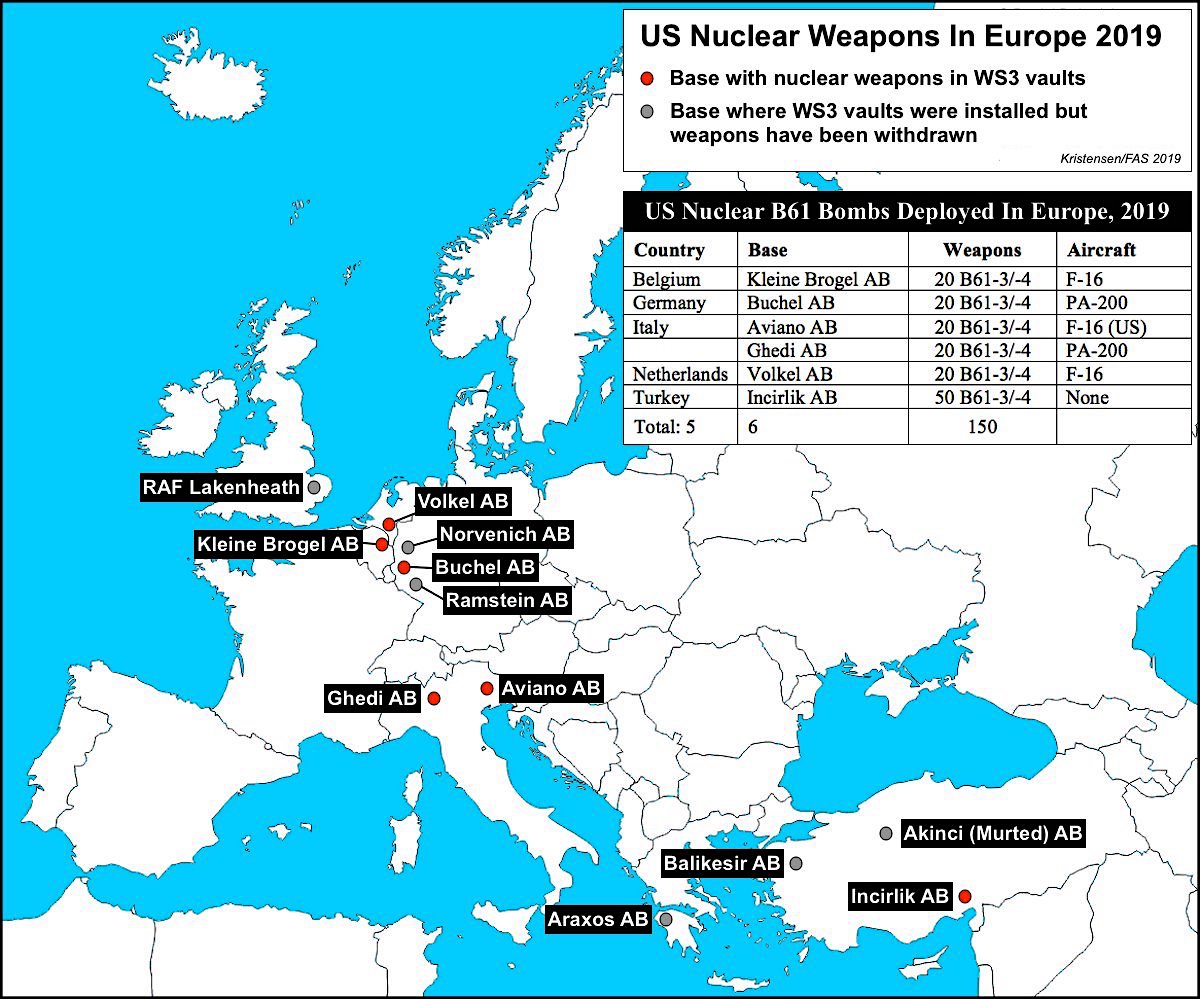
The US Air Force stores 150 nuclear bombs at six bases in five NATO countries. Click on map to view full size.
The remaining 50 bombs are for use by US jets, even though Turkey never allowed the US Air Force to permanently base fighter-squadrons at Incirlik. Jets would have to fly in during a crisis to pick up the weapons or they would have to be shipped to other locations before use. As a result, the nuclear posture at Incirlik has been more a storage site than a fighter-bomber base during the past two decades.
Although the Turkish participation in the NATO nuclear sharing mission was lessened (some would say mothballed) by the withdrawal of the “Turkish” weapons, the Turkish F-16s continued to serve a nuclear role. Despite local reports that F-16s never had a nuclear role, the US Air Force in 2010 informed Congress that “Turkey uses Turkish F-16s to execute their nuclear mission,” and that some of the F-16s would be upgraded to be able to deliver the new B61-12 bomb until the F-35A could take over the nuclear strike mission in the 2020s. That is now not going to happen after the Trump administration canceled the F-35 sale.
In 2015, satellite images revealed construction of a new security perimeter around most of the aircraft shelters with nuclear weapons storage vaults. Of the 25 shelters that originally were equipped with vaults, only 21 were included in the new security area with a capacity to store up to a maximum of 84 nuclear bombs. Normally only about two bombs are stored in each vault, for a total of inventory of 40-50 bombs at Incirlik.
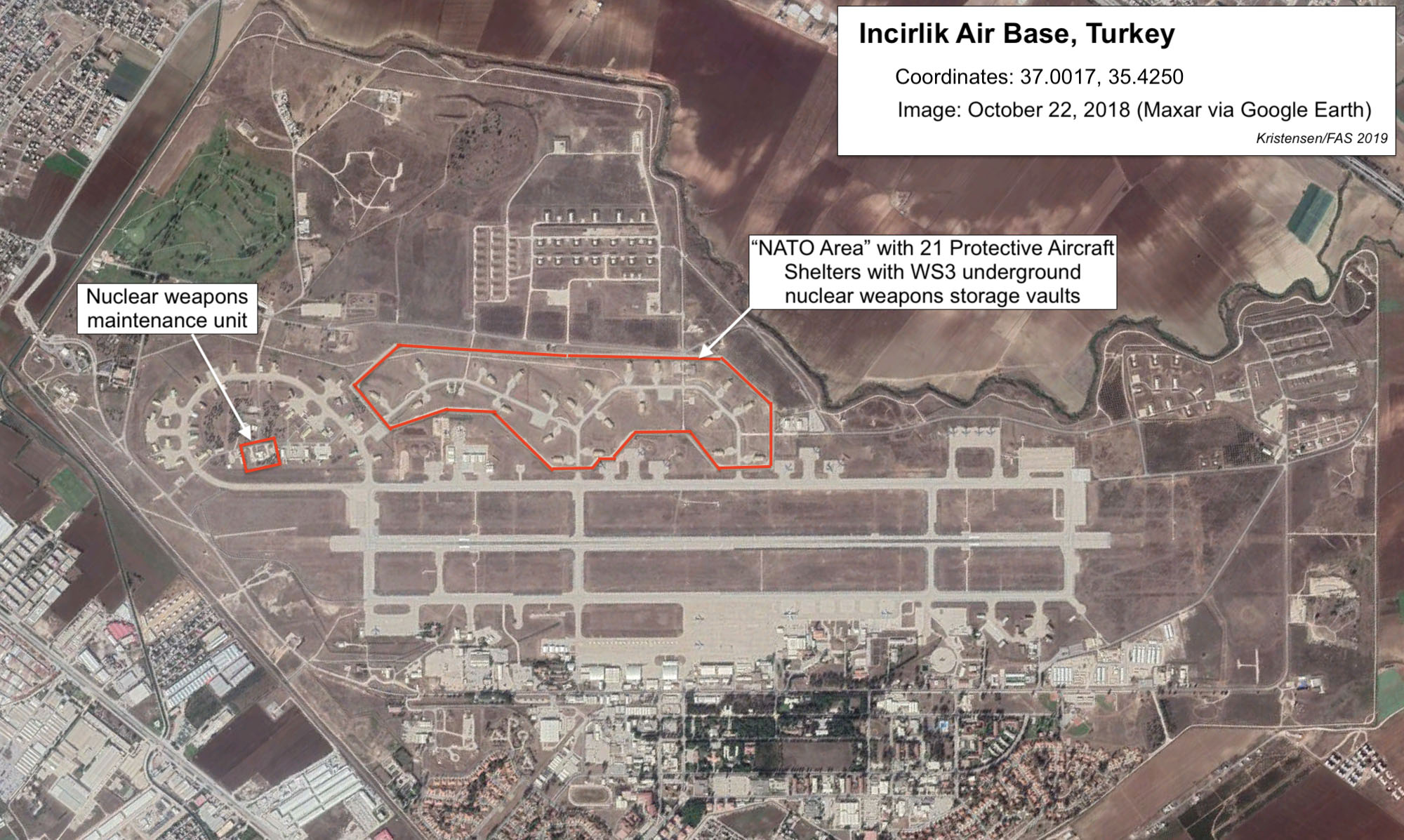
The nuclear weapons mission areas at Incirlik AB include the “NATO Area” where nuclear weapons are stored and the nuclear weapons maintenance unit that manages the underground storage vaults
As recently as last month, Vice Chief Staff of the Air Force, Gen. Stephen W. Wilson, visited Incirlik and was given tours of the various functions and facilities at the base. One of these was Protective Aircraft Shelter H-2 inside the “NATO Area” where he spoke to members of the 39th Security Force that protects the nuclear weapons (see below). He was likely also shown the inside of the shelter and the weapons in the vault.
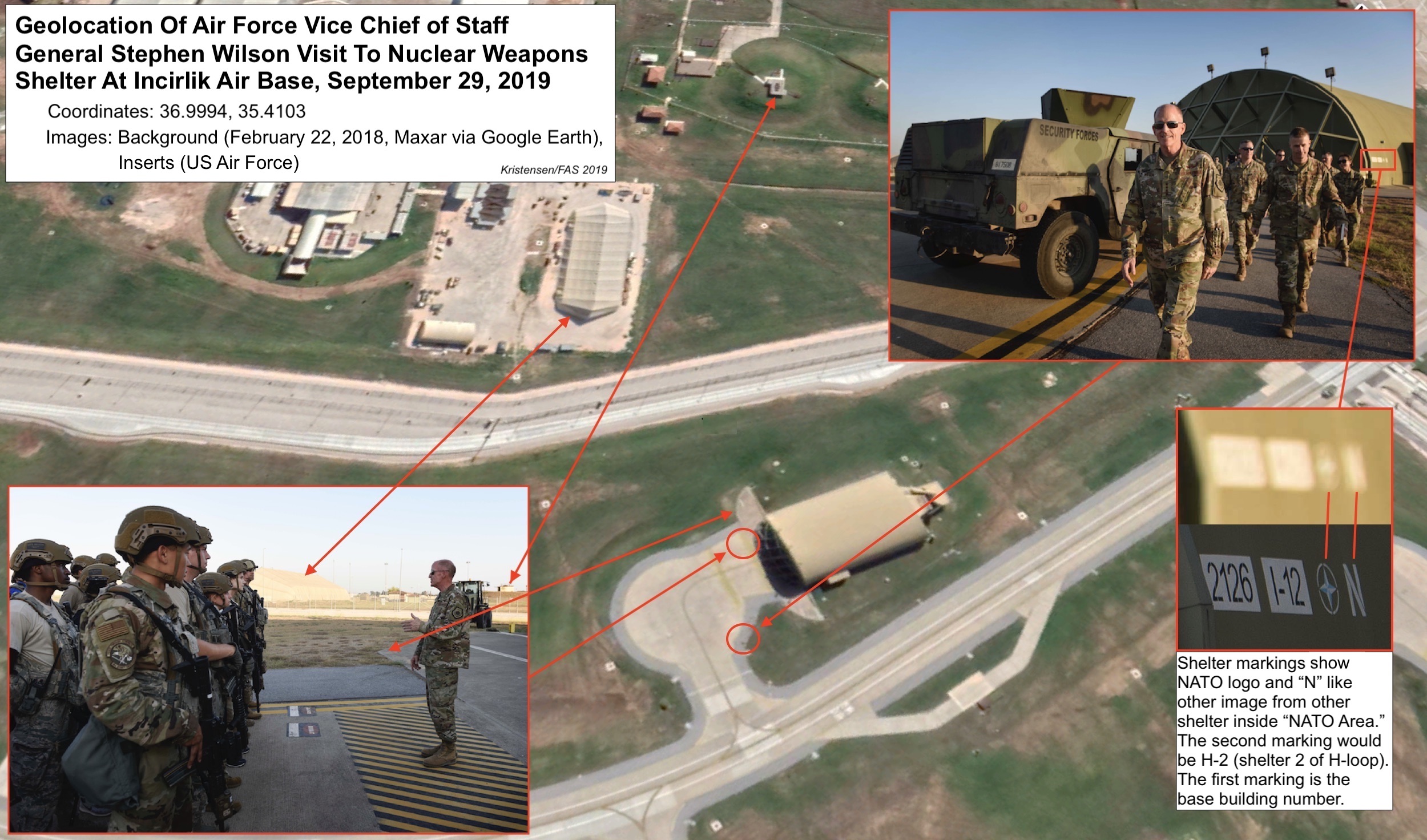
Last month, the Air Force Chief of Staff was taken to a nuclear weapons storage shelter at Incirlik AB. Click on image to view full size.
Recent Activities
If the Air Force decided to withdraw the B61 bombs from Incirlik, it would look pretty much like activities captured by Maxar’s satellites in 2019 and 2017. Those images show what appears to be either actual nuclear weapons movements or training to remove them.
One photo from March 22, 2019, shows a C-17 transport aircraft – likely from the 4th Airlift Squadron of the 62nd Airlift Wing at Joint Base Lewis-McChord in Washington – parked right outside the main gate to the NATO Area. The 4th Airlift Squadron, which is the only unit in the Air Force that is qualified to airlift nuclear weapons, flies Prime Nuclear Airlift Force (PNAF) and Emergency Nuclear Airlift Operations (ENAO) missions (see images below).
The satellite image shows the C-17 and gate area surrounded by armored vehicles and armed guards of the 39th Security Force as well as technicians to protect and carry out the weapon movement. One of the unique vehicles seen is an 18-meter truck lined up with the loading pad of the C-17. The same type of truck can be seen parked at the weapons maintenance unit building a few months later (see image below).
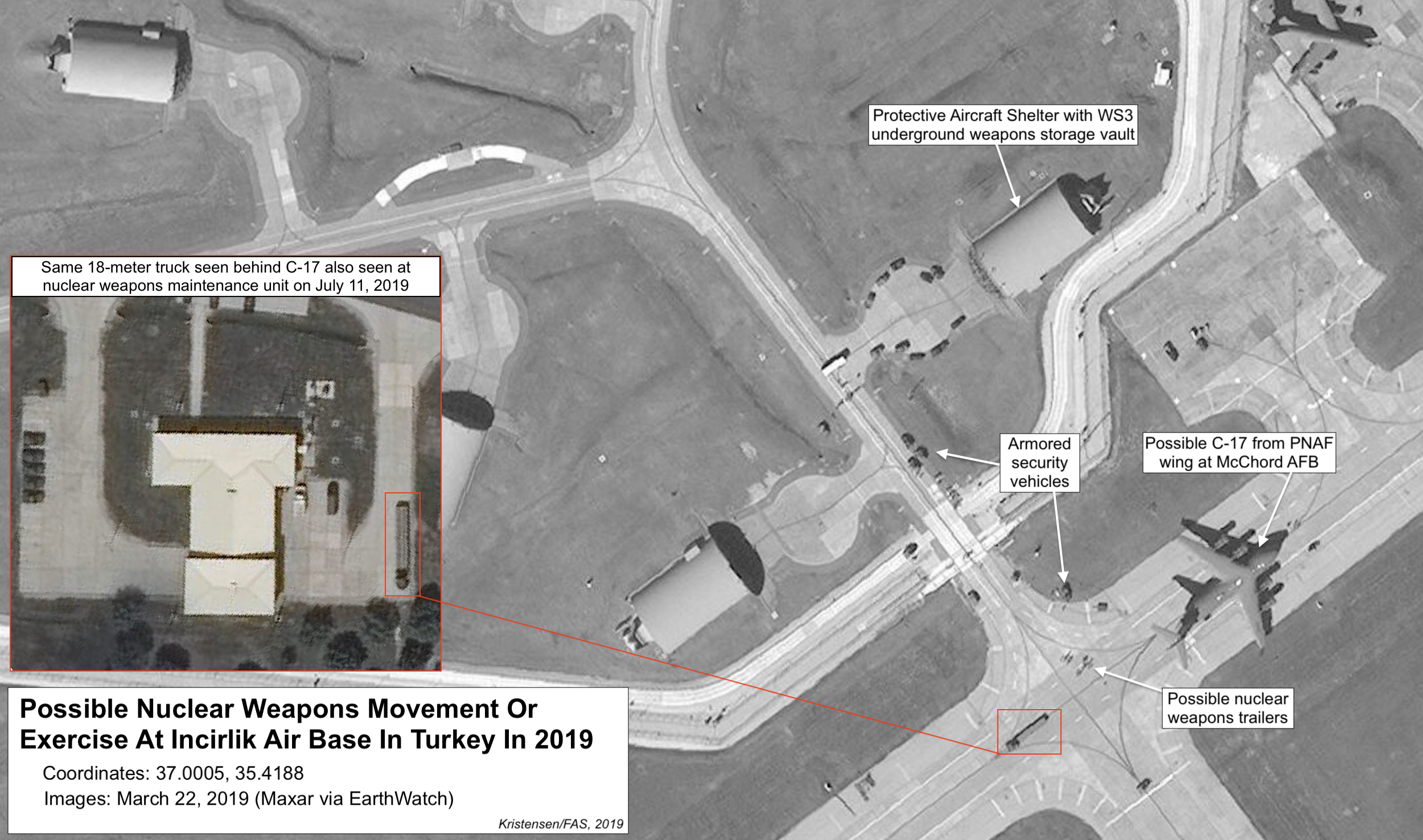
This Maxar satellite image acquired via Earth Watch shows what appears to be a nuclear weapons movement or exercise in March 2019. Click on image to view full size.
Another set of Maxar satellite photos of a possible nuclear weapons movement or exercise is from December 2017. A Nuclear Security Inspection that year (and 2014) reportedly included weapons emergency evacuation drills. The scenario on the 2017 image is similar to that on the 2019 image: a C-17 parked outside the gate, security vehicles surrounding the scene, and transporters for moving weapons. But the 2017 photos are unique because they were taken moments apart as the satellite passed overhead. As a result, movements become visible: On the first image, a possible weapons trailer towed behind a truck in a column of armored security vehicles is moving toward the outer gate of the NATO Area. On the second photo, the column has passed through the gate onto the tarmac and the towed trailer is turning toward the rear of the C-17. The aircraft shadow shows the loading ramp is open and ready to receive the weapons (see image below).
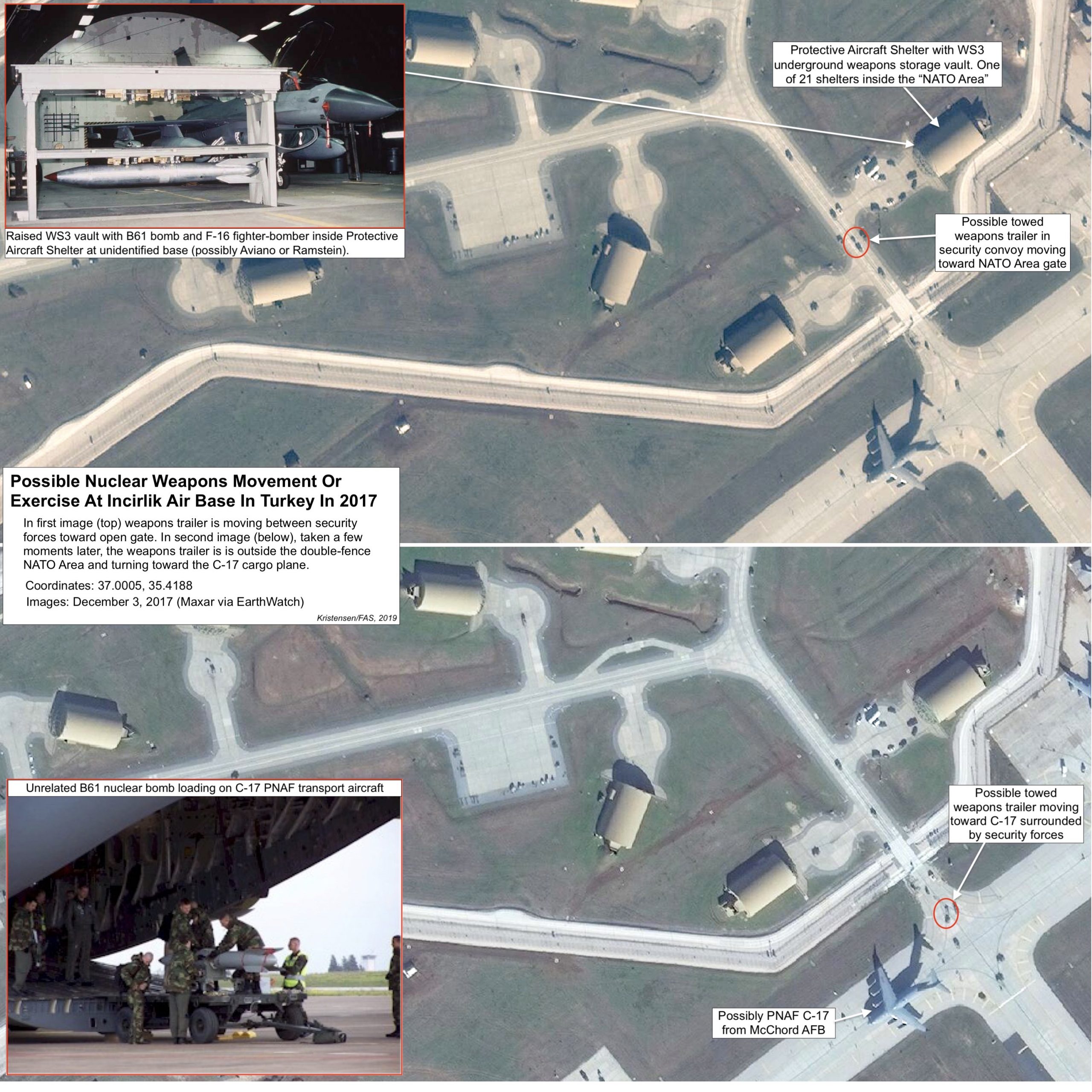
This unique double-image shows what appears to be a nuclear weapons movement or exercise in December 2017. Click on image to view full size.
The Task At Hand: Withdraw The Weapons!
The B61 nuclear bombs at Incirlik should have been withdrawn long ago but tradition, Cold War thinking, and bureaucratic inertia prevented officials from doing the right thing. Now things have come to a head where the United States is faced with the choice of securing its weapons or be seen as abandoning Turkey.
Withdrawing the weapons does not, of course, mean the United States is abandoning Turkey. That relationship is already in serious trouble and keeping the weapons at Incirlik based on the idea that it will somehow counterweight Turkey’s further drift away from NATO is probably an illusion. That boat seems to have sailed; the relationship is likely to deteriorate whether or not there are nuclear weapons at Incirlik. That is the reality the Air Force must relate to now.
Another argument against withdrawal will be that moving them out of Turkey will cause the other members of the so-called nuclear sharing arrangement (Belgium, Germany, Holland, Italy) to question why they should continue to store U.S. nuclear weapons. Withdrawal from Turkey could, so the argument goes, trigger a domino effect of withdrawal from other countries as well.
But the withdrawal of U.S. nuclear bombs from Greece in 2001 and from England five years later did not cause the other countries to demand withdrawal as well or the collapse of NATO. If they truly believe deployment of U.S. nuclear weapons is important for NATO security, then they will stay. If the mission falls with withdrawal from Turkey, then they obviously don’t think it’s important and the weapons should be withdrawn from all the countries anyway. The U.S. extended deterrence posture in Europe can adequately be maintained with advanced conventional forces backed up by strategic forced in the background.
The B61 bombs at Incirlik could easily be dispersed to empty storage vaults in the other countries. Space is not a problem. There are a total of 96 empty weapon slots in the active WS3 vaults in Belgium, Germany, Holland, and Italy. Moreover, there are 25 empty and inactive WS3 vaults with room for 100 bombs at RAF Lakenheath. But public and parliamentary opposition would likely prevent increasing the number of nuclear bombs stored in those countries. If the order goes out to evacuate Incirlik, it seems more likely the bombs would be returned to the United States.
There will be some people who will argue that deteriorating relations with Russia and Moscow’s alleged increased reliance on a so-called “escalate-to-deescalate” strategy of using tactical nuclear weapons first prevent the United States from reducing – certainly withdrawing – its tactical nuclear weapons from Europe. Those are curiously the same people who also argue that the United States should deploy a new low-yield warhead on its strategic submarines and a new nuclear cruise missile on its attack submarines to better counter Russian tactical nuclear weapons – a thinking that was recently endorsed by the Trump administration’s Nuclear Posture Review. That seems to signal to the European allies that the United States actually no longer believes the deployment of B61 nuclear bombs in Europe is credible and that other and better weapons are needed.
Whatever one might think about U.S. tactical nuclear weapons in Europe, Turkey is no longer an acceptable location. Erdogan’s confrontational and authoritarian leadership is rapidly undermining Turkey’s status as a reliable NATO ally, and the deteriorating security situation in the region presents a real physical threat to the weapons at Incirlik. That threat is real and the U.S. military sees it as real. So much so that an extra security force squadron deployed to Incirlik from Aviano Air Base in Italy to beef up nuclear security in response to “regional turmoil and government instability” according to USAF source, and Ohio Army National Guard military police reportedly were dispatched to Incirlik specifically to increase base security.
The security threat to the weapons at Incirlik is urgent and the continued deployment of nuclear weapons at the location is unjustifiable and incompatible with U.S. nuclear security standards. If you don’t believe that, ask yourself this question: If there were no U.S. nuclear weapons in Turkey and someone asked for them to be deployed to Incirlik, would the Pentagon approve?
I doubt it. It’s time to face reality and withdraw the weapons from Turkey before they have to be evacuated under fire.
Additional information:
- US nuclear weapons, 2019
- Tactical nuclear weapons, 2019
- Upgrades At US Bases In Europe Acknowledge Security Risk (2015)
This publication was made possible by generous contributions from the Carnegie Corporation of New York, the John D. and Catherine T. MacArthur Foundation, the New Land Foundation, the Ploughshares Fund, and the Prospect Hill Foundation. The statements made and views expressed are solely the responsibility of the authors.


